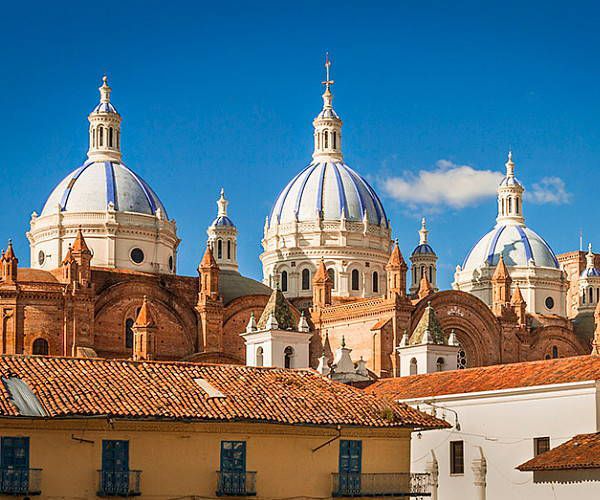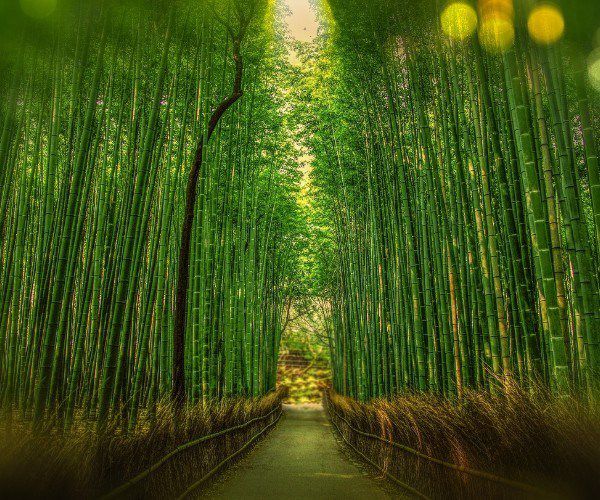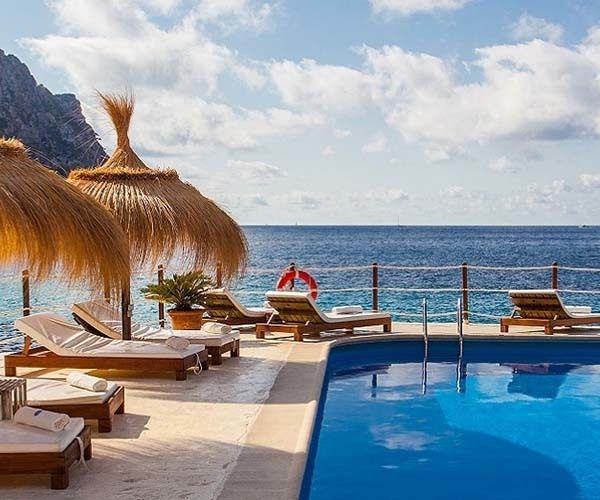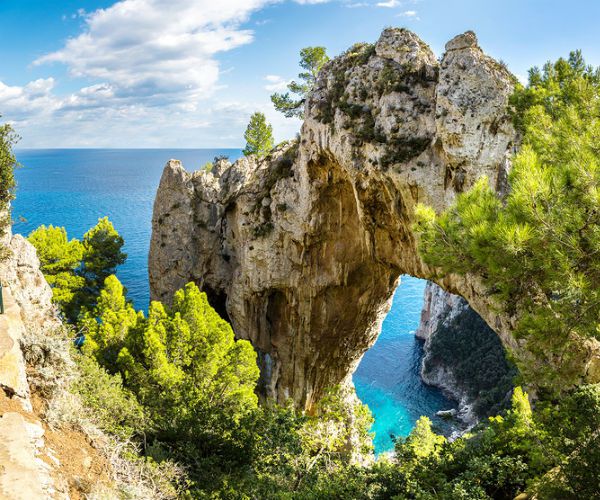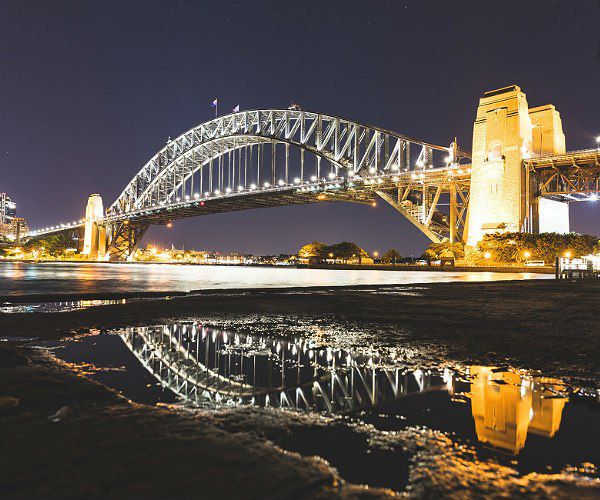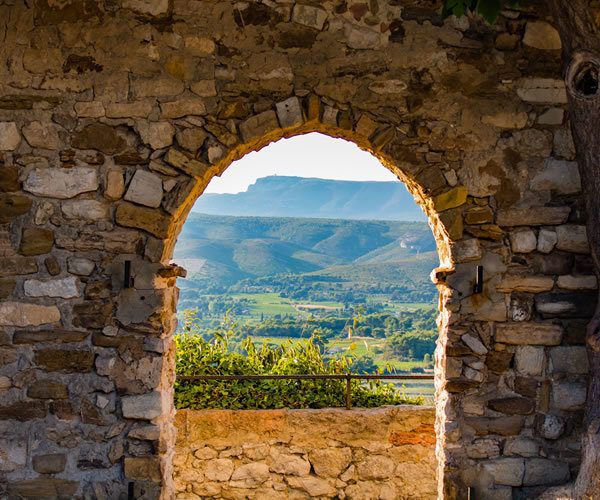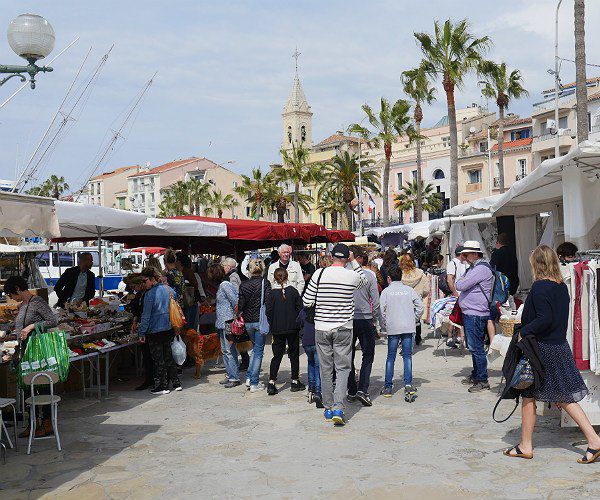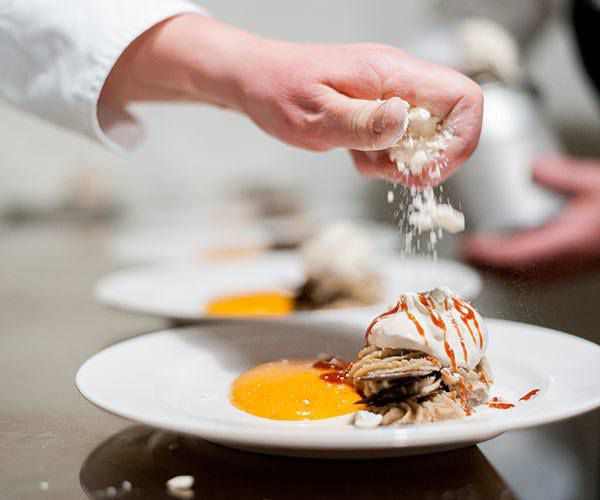Tips for taking gifts through airport security

Don’t set yourself up for disappointment when you travel with wrapped gifts. (Courtesy Thinkstock)
It’s father’s day or the time of year that sends people dashing through the airport with arms full of holiday presents, ready to bring them to loved ones across the country, all fanciful and wrapped beautifully.
But should they be? Taking a wrapped gift through the Transportation Security Administration (TSA) is always an interesting proposition, so let’s run through a few tips as we approach Christmas, Hanukah and Kwanzaa.
- You CAN bring a wrapped gift through the security lines at any airport in the country, but be forewarned: The TSA reserves the right to unwrap and open the gift if it believes it has seen something suspicious during the scanning process. It might not be a bad idea to play it safe and bring wrapping paper and tape through security and wrap the gift at the gate, although you might have to improvise on a pair of scissors.
- Be diligent about what you take as a gift. Anything that even remotely resembles a weapon – even a water gun – is not allowed and can be confiscated. Forget about the wrapping being ruined; the TSA can outright take the gift.
- Large gifts, such as a golf club, baseball bat, etc., should be checked as luggage.
- Got anything that involves liquid? Sorry—holidays are given no special treatment, so any gift that has more than 3.4 ounces of fluid will be confiscated.
Here’s a TSA video on the can-do’s and can’t-dos of holiday travel. https://www.bing.com/videos/search?q=tsa+gift+packing+video&qpvt=tsa+gift+packing+video&FORM=VDRE
Alpine cheese and wine around Mont Blanc
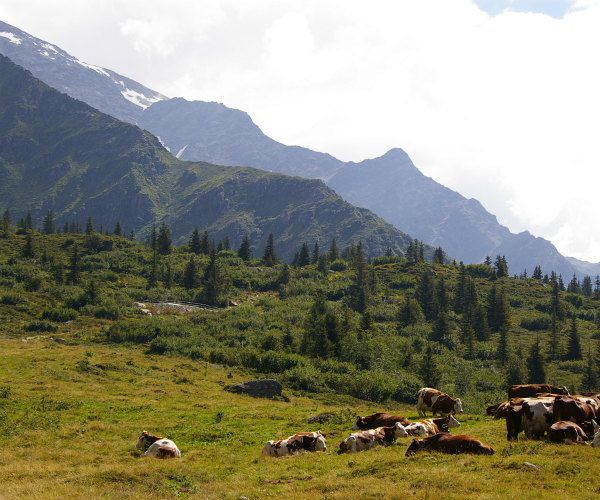
What do you get when three countries with some of the best culinary traditions in the world converge in one area? A gastronomic region of immense proportions. While the area around Mont Blanc spanning France, Italy, and Switzerland is known for big cheese names such as Gruyere and Fontina, there are many smaller cheesemakers that produce specific cheeses from individual valleys, and in some cases, a single village! Visiting Le Refuge Payot cheese shop in Chamonix, you’ll definitely come across new and unknown varieties unlikely to be found outside of France. Check out your country’s customs laws before bringing it back home!
While hiking in the Alps on famous routes such as the Tour du Mont Blanc or the Haute Route, you’ll find firm, alpine-style cheeses such as Beaufort, which is made from raw cow’s milk. The flavor changes depending on whether the cheese was made from spring milk or fall milk, as the grasses, flowers, and weeds the cows graze on in the mountains are different in each season. Morbier is a semi-soft cow’s milk cheese with a characteristic line of vegetable ash in the middle that is rich and creamy. Reblochon may be a bit stinky, but it’s light and nutty and one of the most popular cheeses of the region.

A typical dish on menus in the French Alps and the French side of Switzerland is Raclette. This is both the name of the dish and the name of the cheese. A half wheel of cheese is brought to the table and melted under a broiler. When the top layer gets gooey, tilt the wheel, scrape the melted part onto a plate, and eat it with ham, bread, or potatoes. Return it to the broiler for the next round. Just like fondue (seen in the German part of Switzerland), it’s rather decadent and a lot of fun when everyone partakes.

The vineyards in this region cling to steep hillsides, and the area just south of the Italian town of Courmayeur is home to the highest vineyards in Europe (at almost 4,000 ft or 1,200 m!). Many of the lesser-known grape varieties are rarely found outside of the Mont Blanc region. Well-known ones include Sauvignon Blanc and Gamay from the area around Geneva; Syrah from Valais (Switzerland’s largest wine producing region) in the Rhone Valley; Altesse and Mondeuse from France’s Savoy region; and Pinot Gris and Pinot Noir from the entire area including Italy’s Aosta Valley. It’s such a concentrated area for wine producers, it’s easy to try a different label each night, especially small wineries that don’t export.

Of course, there is more to eat than just cheese—the rest of the cuisine really punctuates an already fabulous destination. From homemade pastas and risotto in Italy, to blueberry tarts and croissants in France, to lake-caught fish and hearty stews in Switzerland. No one goes hungry here! To burn off the extra calories, head into the mountains where a plethora of trails await day-hikers and long distance hikers alike.

By Matt Holmes of www.boundlessjourneys.com
Retire and “Live Large” in these Andean cities
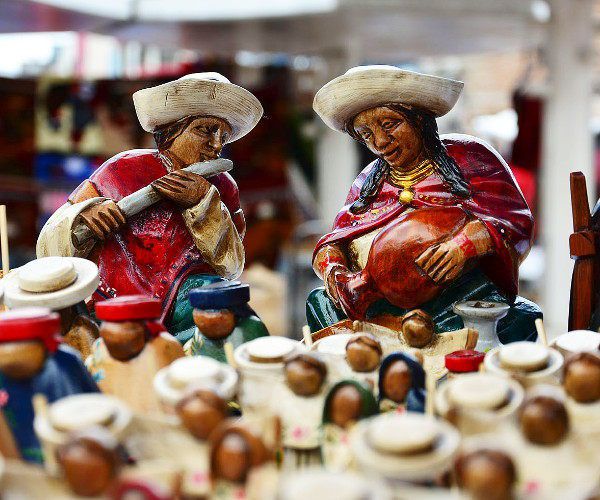
South America’s Andean region is capturing the attention of expatriates in search of a place to spend their retirement. Here, even moderate-income retirees can live in veritable luxury thanks to the region’s excellent medical care, temperate climate, improving safety indices, and, of course, the region’s low cost of living. At the same time, high-speed internet and state-of-the-art international airports permit close contact with loved ones at home. We present to you here what we think are five Andean cities and towns that baby boomers might consider for actively enjoying their “golden years”.
Cuenca, Ecuador
Ecuador has remained somewhere near the top of International Living’s “Annual Global Retirement Index” for years. This year is not an exception, and there are good reasons for that.

For anyone who has excellent weather at the top of their list of personal requirements for a retirement destination, Ecuador is almost unbeatable. And health care in the country equals anything available, anywhere and at surprisingly low prices.

In Ecuador, the city of Cuenca has served as an expat magnet, attracting some 15,000 American and European retirees who have formed a community within this Andean community. For these adventurers, living in Ecuador’s most beautiful city means soaking up the atmosphere of this ancient place while casually sipping a cappuccino.
Spend time quietly wandering cobbled streets and historical buildings, many of which have been turned into museums and cafes! Cuenca is rivaled only by Quito in terms of its rich past, though without quite the same level of urbanization one might find in the capital. Enjoying the mild daytime climate of Cuenca, these retirees experience the local way of life, bucolic landscapes, rustically elegant dining, and complete comfort.
Cotacachi, Ecuador
Though Cuenca has been spotlighted as Ecuador’s expat retirement destination of choice, the small leatherworking town of Cotacachi is stepping into that limelight. Situated only an hour and a half north of Ecuador’s capital city (Quito), this village of 9,000 residents counts among it a small community of about 500 expats who add to the mix.

These people thrive off the area’s perpetually spring-like climate and the easy pace of village living. Not constantly in need of the amenities of the big city, these newer residents indulge themselves in nature-oriented activities like hiking, fishing, and horseback riding. Instead of raucous food courts at a local mall, Cotacachi’s market gives them the chance to savor everything from organic fruits and vegetables to hand-made crafts and fresh flowers.
Arequipa, Peru
While Machu Picchu likely comes to mind when thinking of Peru, interest in a different location is emerging when it comes to a retirement destination in Peru. That place is Arequipa, the country’s second largest city.

Enjoying over 300 days of sunshine a year and spring-like temperatures that rarely go above the high 70s F, strikingly scenic Arequipa is a UNESCO-declared World Heritage Site. Founded in the middle of the 16th century, the city remains famous for its colonial architecture that combines decorative elements of Spanish and native design.
While the metropolitan population is close to a million, the city feels much smaller, particularly its historic district, where you’ll find narrow cobbled-stoned streets, colonial buildings and churches dating back 500 years. At the same time, though, Arequipa has several malls, major hospitals, shopping centers, cinemas, and scores of fine restaurants.
Today, a small but growing expat population has decided that Arequipa is the perfect place for them to live. They’ve “discovered” the city’s rich culture and way of life … a place brimming with modern amenities yet close to spectacular natural settings.
Medellin, Colombia
If your idea of Colombia is Netflix’s “Narcos” series (about the country’s well-known drug brain), it’s unlikely that Medellin will be your first choice as a retirement city. However, expats know that this city is a very different place from what it was in the 1980s, as it’s now a safe place to relocate.

Medellin’s culture of outdoor cafes gives it a European atmosphere and the city is home to a host of artistic and musical festivals. Art galleries, long strings of restaurants, excellent health care and state-of-the-art infrastructure are a few characteristics of Medellin.
This city, too, boasts a warmer spring-like climate all-year round, which makes it ideal for many retirees. Plus, being located between the ranges of the Andes Mountains, free time can be spent interacting with nature through hiking, rock climbing and even camping. Finally, while the Internet is fast and reliable, you’ll still need to brush up on your high school Spanish, as most of the locals don’t speak English.
Colombia’s Coffee Triangle
No matter where you hail, the tranquil landscape of Colombia’s Coffee Region is sure to evoke an instantly calming presence. Instilled with the immense hospitality and a healthy dose of regional pride, the Coffee Region’s locals (países) are deservedly considered some of the friendliest people on the planet.
Whether you enjoy reading in a quiet coffee shop, listening to some of the local Vallenato and Bachata music, or examining some of the finely made regional craftwork, there’s something for everyone.
Baby boomers can also spend some of their time stretching their legs in either the luscious Cocora Valley or the more challenging Parque de los Nevados, where scenic terrains of towering wax palms and a still-smoking volcano await.

In this region, the triangle formed by the smaller cities of Armenia, Manizales and Pereira is perfectly situated around an international airport, while each locale is blessed with traditional Colombian haciendas and more modern in-town amenities. Getting a retirement visa in Colombia as a whole is not that complicated either, which makes it even better.
In any case, before taking the plunge, it’s always advisable to visit your city of interest to “kick the tires and do a test run.” Spend at least three or four weeks getting to know the area, talking to expats and locals to see if such a destination fits your interests as a place to retire. And keep in mind that these cities have already proven themselves viable options for tens of thousands of more adventurous seniors …so one of these sites might just work out for you too.
By Alfonso Tandazo of www.surtrek.com
Great local Alpine dishes

One of the benefits of a few hours skiing is the healthy appetite that you tend to work up. Any regular skier knows that such an energetic activity is going to require a pit stop, sooner or later. When you start to wilt a little, thoughts turn to where to pull up for lunch. A tasty treat or two goes a long way to filling the tank for the second half. The tasty treats below will ensure your tyres are pumped and your tank is full to enable you to fill the remaining time before apres ski. Below are seven of the best refuelling options. All hearty fare, I recommend trying each one at least seven times before settling on your own favourite.
Tartiflette
Tartiflette was a stroke of culinary genius from the Haute-Savoie. Thinly sliced potatoes layered with smoky lardons, caramelised onions and the finest melted Reblochon cheese. The name derives from the Savoyard word for potatoes, tartifles, a term also found in Provençal.
As with many traditional dishes in the region, the potato is a staple ingredient. Savoy was historically part of the Roman Empire and was exposed to potato tubers earlier than other regions of France. The Savoyards first heard of tartiflette when it began to appear on the menus of restaurants in the ski stations, conveying an image of authenticity and mountain terroir, the characteristic taste and flavour imparted to a dish by the environment in which it is produced
Raclette
Raclette is a semi-hard cheese that is usually fashioned into a wheel of about 6 kg (13 lb). The Alpine cow milk based dairy product is most commonly used for melting but is also consumed as a slice.

Raclette is a Swiss dish, also very popular in Savoie, France. Raclette was traditionally eaten by Swiss cow herders around the camp fire. Scraped onto bread, it provided a hearty meal after a long day of herding in the alpine meadows. Today, scrape it onto potatoes and dried meats for a long day of skiing.
Fondue
Fondue is a Swiss melted cheese served in a communal pot over a portable stove heated with a candle or spirit lamp and eaten by dipping bread into the cheese using long-stemmed forks.

It was promoted as a Swiss national dish by the Swiss Cheers Union in the 1930s, and was popularized in North America in the 1960s. Personally, I recommend a fondue blend of Gruyère and Vacherin Fribourgeois. Fondue is often served with a variety of meats also.
Rösti
One of the most iconic dishes of a Swiss skiing holiday and rightly so. Who couldn’t be persuaded by thinly grated potatoes, pan fried until golden and crispy?

Choose between a topping of fried egg, salty bacon or melted raclette cheese for the ultimate rösti. Rösti was originally a breakfast dish, commonly eaten by farmers in the canton of Bern but is now eaten all over Switzerland and around the world. The French name röstis bernois makes direct reference to the origins of the dish.
Käsespätzle
Soft fresh egg pasta, onions and Emmental, Käsespätzle is Austria’s equivalent of Italy’s macaroni cheese.

If you are yet to indulge in one of the Alps’ greatest comfort foods, this needs to be on the bucket list for your next pit stop on the piste.
Goulash
A steaming bowl of goulash could well be waiting for you, the thought of that alone is enough for you to get a wiggle on and get to the outdoor terrace.

What could be better, this hearty dish with views to die for. Originally a staple Hungarian stew of beef and potato for hungry shepherds, they could never in their wildest dreams have ever imagined that it could become a staple for snow lovers across the Alps.
Apfelstrudel
So, are you up for dessert? I should jolly well say so. This yummy delight is a perfect accompaniment to all the above.

second helpings are a distinct possibility! So, are you ready for the afternoon session? With this quality refuelling I think you’ll be sustained all the way to apres ski and beyond.
By Dan Frith of www.ski-boutique.co.uk
Family friendly destinations in Asia

Seeking out a long-haul destination in Asia when travelling with children or families can be a daunting experience. Moving away from the well-trodden routes of Thailand villas and India’s Golden Triangle opens up a wealth of opportunities for bucket-list holidays that will be never be forgotten. We have spent many years travelling across the vast continent to seek out the best destinations for families in search of the unique and astonishing. Here are four of our most adventurous family and child-friendly hotspots across Asia. Experience the joy of exploring new cultures and some of the most beautiful places on the planet through the eyes of the younger generation – inspiring them and opening their eyes to new cultures and sights.
Bali beaches and boats
The tropical island of Bali is renowned for its friendly and child-loving locals – a relaxed attitude pervades every area of the culture and little ones are welcomed with open arms. People love to chat about children’s ages and birthdays, so earn kudos by learning the following local words: bulan is month, tahun is year, laki-laki is boy and perempuan is girl. The Oberoi Bali is set in lush gardens and is located a hop away from a glorious beach, they also offer babysitting for nights out in Seminyak – bliss.
The beaches across the island are magical for young visitors – our favourites include Sanur Beach with its softly lapping surf and the fun surf schools of Kuta Beach. There are a plethora of outdoor activities to be found – around Ubud is the Ubud Monkey Forest, an Indiana Jones-style landscape of temples and monkeys as well as the Bali Bird Forest with its exotic reptiles. Sail with them into the sunset flanked by leaping dolphins on the northern coast of Lovina. Temple visiting is fun for all ages at Goa Gajah – where you enter a hermit cave through the jaws of a monster and the scenic jungle Pura Luhur Bakutau.
India of the Jungle Book
Corbett National Park in India’s Uttarakhand is a wildlife haven and an eye-opening Jungle Book experience for all the family. Established in 1936 by Jim Corbett, the protected forest offers a journey into learning about conservation as well as an adventure holiday. Nestled in the Himalayan foothills, Jim’s Jungle Retreat, run by the charismatic Daleep Akoi, has a passion for introducing young people to wildlife at its heart. For an exciting start, take a train from Old Delhi Railway Station and be met by one of the camp’s jeeps.

Stay in the Family Cottage with its verandah and birdsong-filled surroundings. The camp’s Young Ranger’s Programme is aimed to take kids far away from screens and into the beating pulse of Sher Khan’s kingdom. Relax in the spa while your budding Mowglis are taken on river walks to track animals, butterfly and village walks as well as wildlife feature films and inspiring sessions with resident naturalists. Finish your visit with a picnic at the beautiful Corbett Waterfalls.
Japan – the land of imagination
While Japan might not immediately spring to mind when planning a long-haul holiday with little ones, the Land of The Rising Sun is bursting with memorable attractions for junior explorers. Tokyo is a dizzying and exciting visual treat for young imaginations. The family-friendly Keio Plaza, with its rooftop pool and downtown location, is the perfect base to explore the legendary theme parks of the city. Cartoons spring to life at Hello Kitty Land and Kidzania, where visitors can delve into cooking classes, theatre, dance and even be mock firefighters.

Older children will love the thrills of Fujikyu Highlands Rollercoaster Park with its jaw-dropping views of Mt Fuji and the beautiful dolphin park at Hakkeijima. Family walks through nature are found at the Imperial Palace East Gardens. Jump on the bullet train and into the world of Harry Potter at Osaka Universal Studios with its Gladrags Wizardwear and Wand Studio among others. The old Imperial city of Kyoto is a wonderland of sights for young eyes, from the towering Arashiyama Bamboo Grove with its chance to row down the Hozu-gawa River and explore the Monkey Park. The city’s Railway Museum is one of the best in the world and the bubbling Onsen hot springs scattered around are a great way to get kids to have a fun bath! Japan is one of the most child-friendly cultures on the globe. Each day is a rewarding adventure brimming with the unusual and inspiring.
China – a feast for all the family
For a truly off-beat destination for all the family head to the Chinese Himalayan foothills. The UNESCO World Heritage town of Lijiang is a warm and welcoming paradise in the shadow of the Jade Dragon Snow Mountain. To come here is to enter another world – expanding imaginations and horizons with breathtaking scenery and culture. The tree-lined cobbled streets echo with the merchants and warriors of the Silk Route. Children can learn about the Ancient Tea Horse Caravan Trail to Tibet as well ride as horses around the shimmering La Shi Hai and enjoy gentle hikes.

The verdant alpine scenery has some of the cleanest air in the world and river rafting is fabulous, from beginner to exhilarating white waters. Lijiang’s Dayan Old Town is called the ‘Venice of the Orient’ and water abounds, family bonding is assured while kayaking on the emerald lakes among a thousand birds from far-off lands. The luxurious Banyan Tree Resort offers a special ‘Sense of the Family’ experience which takes in a memorable visit to Baisha village and a meal with a local family. A day outing to the Thousand Tortoise Mountain is something to remember – the red sandstone formations are climbed barefoot while the Great Wall hike, a few hours drive away, is the ultimate family thrill. Stretching 10 kilometres over five hours between Simatai to Jinshanling, this once-in-a-lifetime experience is suitable for children over eight years and will have them bursting with excited energy. The China of myth, mountain and legend is waiting!
Thailand – beaches to jungles
Thailand is world-famous for its friendly and welcoming people. Referred to as the ‘Land of Smiles’, Thailand is very welcoming to children, this plus the weather and activities make it a fantastic place for the whole family to enjoy. Keep the locals smiling by learning a few local phrases – hello is “sah wah dee khaa” if you are female or “sah wah dee khrap” if you are male.

Thank you is “khob-kun-ka if you are female or “khob-kun-krub” if you are male. Head to Phuket in the southwest or Koh Samui in the southeast for some of the best sandy beaches. Phuket is popular with families, with a beach to suit everyone, whether you are looking for quiet relaxation or lively activities. Splash Jungle Water Park is a fun day out for families and there are many trips to explore nearby islands. Kids will love a visit the elephant sanctuaries of Chiang Mai and Koh Samui. Chaing Mai also offers trekking through the jungle, zip lining, museums, local markets, rafting, cooking schools and much more for all the family to experience.
By James Jayasundera of www.ampersandtravel.com
The best beach clubs in Mallorca

You may be quite happy rocking up to the beach, spreading your towel on the sand and basking in the sun with the minimum of fuss. All well and good. On the other hand you might, from time to time, crave a little luxury and a more sophisticated visit to the beach. In that respect the beach club experience wins hands down and can provide the facilities to make a pleasant day at the beach a great day at the beach. Here are five options on the wonderful island of Mallorca.
Grand Follies, Cala Lamp
The Grand Follies is situated in a natural bay with steep sided cliffs surrounding and embracing the club, giving it a cosy ambience. It’s a beautiful setting and is hard to beat if you like the spectacular. The luxury pads set into the cliffs are feats of engineering that have you marvelling at the skill of the builders.
The views from these vertiginous properties must be pretty awesome. There isn’t any sand here, it’s more a rocky cove but you can swim in the sea or in the pool on site. Yachts moor out at sea and a quick call to the club will see a launch set out to ferry the passengers ashore for lunch in the shaded dining areas provided. The food is good and the service is excellent. There are comfortable sunbeds for hire and you can even book a massage. My one gripe is that there’s only one toilet. If you don’t mind queuing when it’s busy then it will suffice. Other than that, a day here is a day well spent.
Assasona, Palma
This lovely beach club recently changed owners and had a superb makeover. There are three dining areas to enjoy the varied menu. You wouldn’t want to eat on the outside terrace on a hot day but there is plenty of room inside the light and airy bar area or a shaded terrace area to the side of the club.

You’ll find the sunbeds for hire on the beach with easy access to the sea. Assasona is the polar opposite to Grand Follies, in that it’s situated on the sand and there isn’t a cliff in sight. There are views off to the right of Palma Cathedral and the distant mountains beyond. Assasona is sandwiched between the sea and the cycle path that runs from Palma port to Arenal. It’s easy access means it gets very busy so booking is essential.
Puro Beach, Illetas
Illetas beach is a gorgeous setting to host a beach club, the natural bay is a little on the small side perhaps but cosy and welcoming all the same. The Puro Beach club management certainly knew a great spot when they saw one, they opened for business here in 2017.

Puro Beach boasts two bars, one on the outdoors terrace and one interior bar along with an exterior restaurant. There are approx 109 sunbeds here, all with sea view and 4 Balinese beds. There’s a wellness spa too where you can be pampered to death if you so desire. There’s even a shop selling Puro branded goods, including the Puro Beach music CD’s along with fashion and accessories. There are changing rooms with showers, a handy feature. Puro Beach comprises of a multitude of unique spaces, combining nature, the open air and the Mediterranean. Arabian influenced fountains and arches, Mallorcan olive and pine trees, natural wood and crystal blue water which crashes against the rocks is a pretty inspirational day at the beach in a place where you can enjoy the Mediterranean sun in all its glory.
Mhares Sea Club, Llucmajor
Mhares Sea Club is located in the old marine quarry, the stone taken from this site built the Cathedral of Mallorca. Mhares Sea Club emanates a very special energy that envelops and seduces the visitor upon arrival. All the spaces of Mhares Sea Club are carefully thought out and induce the feel good factor.

The pool is surrounded by an exclusive sun terrace with hammocks and Balinese beds with spectacular views from which you can access the sea. The magic of the infinite horizon of the Bay of Palma, the salty breeze, the sound of the waves crashing on the rocks make this place the perfect setting to experience a whole world of relaxing sensations. The bustle of the city is far away from this oasis of calm and tranquility set in the middle of nature. At night the candlelight and torches engender a seductive atmosphere that invites intimacy. The restaurant and snack area offer the delicious specialties throughout the day. The chill-out area invites you to enjoy the sunsets and the post sunset atmospheres enhanced by the music and the special magic of the Mediterranean moon. The club also has a space for therapeutic and relaxation massages.
Nicky Beach, Magaluf
The strap line on the Nicky Beach website states that “Nikki Beach Mallorca is the epitome of everything that is chic and glamorous about a day at the beach”. I would agree, I think they pretty much nailed it with that claim. Nikki Beach is a 20-minute drive from central Palma.

The chilled atmosphere and the style of the venue makes for a pretty special day out at the beach. An enthusiastic, energetic and young team exude passion for hospitality and do their best to relax and welcome you. Set overlooking the Isla de sa Porrassa on Calvia Beach, it’s a fantastic place to relax. The food served is what you would expect from an established brand that tries to be the best at everything it does. The music is chilled and sets the tone for a relaxing day in fabulous surroundings.
By Dan Frith of www.ski-boutique.co.uk
Visit the summer playgrounds of Roman Royalty on a private yacht charter
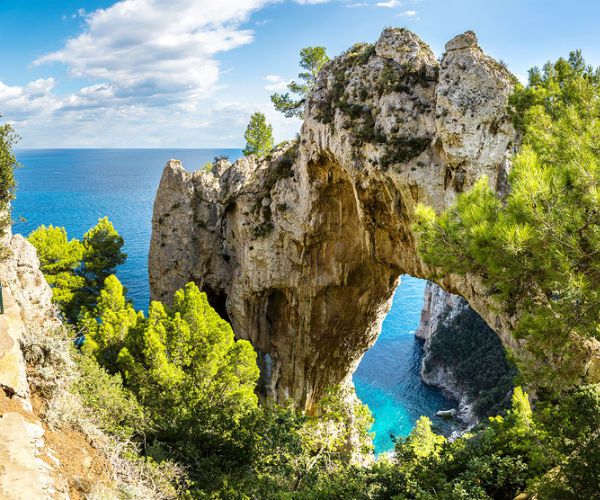
As fabulous today as over two thousand years ago, these private yacht charter destinations were the runaway resort destinations and summer playgrounds of Roman Royalty and the very wealthy so very long ago. Today every location still vibrates with the same beauty that once drew the Romans to each location. And just like two thousand years ago, many of these locations are still remote and still best reached by private yacht. When thinking sunny, gorgeous, crystal clear clean waters; run away by private yacht, just like the ancient Romans did so many, many years ago to one or more of these 5 favorite Roman Royalty and wealthy elite runaway resort destinations, all still evocative of Roman fun in the sun, with remnants of Roman resort villas and palaces built so long ago still an imprint on the landscape.
Ponza Island, Pontine Islands, Italy
Felt by many today to be one of the most beautiful islands in the world, this same feeling was certainly shared by ancient Romans that were so enamored with this island that they built a tunnel from the main and only harbor through the island to Luna Bay, a fabulous blue green crescent of water ringed by sheer sparkling white chalk cliffs, where nearby were built their splendid luxury villas and palaces perched on the island’s edge on cliffsides, high above the glistening waves.

In the cliffsides various caves and tunnels were hand dug, such as the Pilate Grottos which were cut into the side of the island under the Roman villa of Emperor Augustus’ daughter. Today the caves and tunnels can be explored, while overhead the remains of the villa can still be seen up above. The Pilate Grottos presumably date back to the 1st century BC. This series of connected pools and tunnels were created perhaps for raising moray eels, food only for the very wealthy, or perhaps so that women, vain to keep their skin white, could bathe without fear of being tanned by the sun. Whatever the reason the caves and tunnels were dug, the reason was to support the luxurious lifestyle of royalty and the very wealthy. Remains of another villa can be seen close by dating back to the Augustan age with terracing on different levels, a small theatre and a pool dug out of the rock.
Cruise by private charter yacht into the main harbor of Ponza, which today is a sleepy fishing village, and enjoy exploring ashore where bothersome cars are very few, and most people get around on their own two feet. After sail around to the other side of the island to beautiful Luna Bay to swim in the clear waters warmed by the sun reflecting off the white chalk cliffs. Jump in the ship’s tender to explore the Pilate Grottos bathing, perhaps like the ancient Romans or like the ancient moray eels in the pools, tunnels and waters of Ponza Island.
Capri Island, Naples Bay Islands, Italy
Chic today, and chic two thousand years ago, the island of Capri has for well over 2000 years been a popular summer destination, being most famously so for the Roman Emperor Tiberius who, tiring of the politics, escaped Rome to Capri building not 1 but 12 palaces on the island, all with stupendous views. Tiberius lived in the largest palace, Villa Jovis, named after Jupiter, which today is the best preserved of the 12 palaces built on the island and is one of the best preserved Roman palaces in Italy. That which remains today is just a hint of the previous grandeur of Villa Jovis. Tiberius was perhaps the most famous Roman Emperor to build palaces on Capri, however he was not the first. Before Tiberius, Emperor Augustus also built a summer palace on Capri.

Today, Capri is as lovely as ever, rising out of the beautiful seas that surround the island reflecting that lovely Capri signature shade of blue. Ashore lemon and citrus groves march up the hillsides, with the scent of citrus wafting on the breezes. With a very small harbor, dockage is at a premium which those in the know reserve well in advance and expect to pay a hefty sum to be on one of the few yachts docked in the small harbor. There is an anchorage on the Atlantic side of the island, however sea conditions can be too rough to be able to anchor overnight. Ashore are elegant excellent restaurants and shops stocked full of every well-known and high end label of goods and clothing that can be crowded onto this tiny island. Dock in the harbor on a private yacht charter, and take the funicular from the harbor area to the town on the top of the island and enjoy walking the shopping streets or just having a drink in a café enjoying the view of the waves of the Mediterranean Sea and the waves of people passing by.
Split, Croatia
Always beautiful, the coastline of Croatia was coveted by Romans as a vacation destination. No Roman loved this area more than Emperor Diocletian who snatched a large parcel of the coast for his very own in what is now Split to build a large retirement palace to live out his days on this coastline, far from Rome, relaxing by the sea in what he felt to be one of the most beautiful locations on earth. To effect a comfortable retirement, Diocletian built a large Palace complex to house 9000 of his family, servants, guards, support staff and all of those needed to keep a small city running smoothly to see to every aspect of his comfort. Unfortunately, once completed, the ex-Emperor only lived in the palace complex for a short time.

Eventually the entire complex was abandoned. As happens when a complex so massive is abandoned, others move in, and eventually, although parts of the complex crumbled and decayed, other parts were adaptively reused, with homes and shops built into various parts of the palace, as well as eventually a christian church. Over the centuries, anchored by the palace complex, the town of Split developed and emerged on the coast of Croatia.
Today, Split has a lovely harbor and the living remains of Diocletian’s Palace in the center of Split are filled still with shops, apartments, and a church besides other spaces and the entire complex is a UNESCO World Heritage Site. This is a vibrant seaside town with a fun filled nightlife. Nostromo’s, considered one of the best restaurants in Croatia, is located right next to the remains of Diocletian’s Palace. With a new yacht marina on the far side of the harbor, and the lovely medieval walled village of Trogir close by, along with a myriad of great anchorages from which to choose, and the islands of Solta and Brac close by, spending time around Split and Diocletian’s Palace is a great runaway yacht charter destination.
Ventotene Island Pontine Islands, Italy
An arid island, it was the Romans that brought water to Ventotene by building an elaborate underground system of cisterns that any engineer today would be proud to have designed. Above ground a large royal palace was built on the headlands of what is now Punta Eolo. However, the stunning palace built for royalty was mainly used to house royal prisoners, such as Emperor Augustus’ daughter Julia who spent years banished to Ventotene living in the royal villa which came to be known as Villa Guilia. However, while living in banishment, Julia, as royalty, was also living in the style to which she was accustomed, and was living in a lovely location surrounded by beautiful water, and in a location where many longed to vacation. Romans also built a harbor out of the local tufa rock, and a series of 3 pools in the harbor area which contain a complex design of fresh and salt water to assure that the local wealthy had a constant supply of fresh fish.

Ventotene today is a lovely serene island with a small number of locals that live on the island year around. Surrounding the island is beautiful crystal clear water, and this island is one of the few locations in which to scuba dive in the Mediterranean Sea. Anchor in the Roman harbor and enjoy all that this island has to offer on a private yacht charter.
Brijuni Island Brijuni Archipelago, Croatia
On the eastern coast of Veliki Brijuni Island are the extensive ruins of the once magnificent Roman Villa Rustica on picturesque Verige Bay. Having chosen one of the most beautiful vistas in Croatia, construction began in the first century B.C., reaching its heyday in the first century A.D. Some parts of the villa were used until the 6th century. The villa was owned by the senatorial Laecanii Family and probably was owned by Roman Royalty in the second half of the first century AD. It is said to be among the three most luxurious villas ever built during the time period of the Roman Empire including a villa in Pompeii and Tiberius’ Villa Jovis on the island of Capri. The villa consisted of several buildings, a library, three different level terraces and huge gardens.

The Brijuni Islands are a group of fourteen small islands in the northern Adriatic Sea along the coast of Croatia, are a beautiful little archipelago, and today part of a national park so remain virtually untouched. As a national park, the archipelago is still filled with fish, as there can be no fishing except by local fishermen. However, this assures, a ready supply of fresh fish for your chef on board. Don’t expect much night life, as that is not the reason to get away from it all here. This is an area still lauded for the natural beauty today, where a week can be spent in relaxing solitude on board a charter yacht surrounded by gorgeous scenery, and lovely clear blue green waters beckoning for swimming and water toy fun.
Given the art and architecture the Romans left behind as a reflection of their culture, the conclusion easily reached is that this was a civilization that appreciated beauty and the finer things in life, which included a luxurious villa on the seaside positioned and terraced in such a manner as to allow the inhabitants the best possible view in a location where the natural beauty was unsurpassed. Vacation villa and palaces were built for the Roman Royalty and wealthy on Ponza, Capri, Ventotene and Briuni Islands and in Split, all locations then as now of outstanding seaside beauty, and only reachable then and easily now by private yacht. Slip away today by private yacht charter to one or more of the same destinations that the Romans coveted so many years ago if only, just like the Romans of so long ago, because you can.
By Missy Johnston of www.northropandjohnson.com
Plant-based pioneers in Singapore

As plant based options become the norm on menus around the world it truly is an exciting time to be vegan. Gone are the days when we would have to sustain ourselves with dishes that lacked creativity, taste and nutrition. Now we can dine at the finest restaurants and stay in luxurious hotels safe in the knowledge that our food will be as exciting as our surroundings. If you’re looking for places who are showcasing what could be the future of food (it’s well documented that our current way of eating as a race isn’t sustainable) then head to Singapore, where an ever growing number of the leading hotels and restaurants are taking plant based dining to the next level. These plant based pioneers in Singapore have embraced the innovative brands that are at the forefront of plant based alternatives such as Beyond Meat, Omnipork, Impossible Foods and JUST Egg. The ‘meats’ sizzle like the real thing and the flavours and textures are also just like the real thing, whilst the ‘egg’ is uncannily realistic. Vegan or not, these are intriguing and exciting times for food lovers.
We headed to Singapore where we indulged ourselves in a varied and delicious selection of creations using these planet saving, animal friendly and altogether healthier alternatives…
Leading from the front, and the first to offer the ground breaking Beyond Burger in Southeast Asia, these guys are true plant based pioneers. Driven by a commitment to sustainability, they offer multiple plant-based options at Grand Hyatt Singapore and we’ve been lucky enough to try most of them.
Whether you want to enjoy the Beyond Burger at mezza9, their flagship restaurant, or relax in the garden setting of Oasis where you can choose a Beyond Sausage Hot Dog or a JUST Egg Sandwich, you are sure to enjoy your plant based experience at Grand Hyatt Singapore. Plus there’s the bonus of being right in the centre of Singapore’s shopping and entertainment hub of Orchard Road.

Empress is a great choice for a restaurant in Singapore; set within the Asian Civilisations Museum and boasting an enviable location overlooking the Singapore River, they have truly embraced plant based cuisine. Menus feature multiple plant based dishes throughout, taking traditional Chinese food (which is often full of hidden and not so hidden animal products) and making it suitable for vegans and vegetarians.

Diners can enjoy Omnipork, a ‘game-changing’ pork alternative, in dishes such as a flavour packed ‘Vegetarian Mapo Tofu’ or delicate romaine wraps with cauliflower, lotus root and olives. On their exclusive Impossible Menu you will find starters including ‘Crispy Pancake with Chinese Chive’ and ‘Black Pepper Meatball Skewers’; they’re the kind of thing you’ll eat and be convinced the kitchen has sent you the meat version instead.

The Fullerton is synonymous with the rich history of Singapore and their Cantonese fine dining restaurant Jade, has been impressing discerning diners for more than 10 years. In an effort to embrace the demand for plant based cuisine they have introduced an impeccably named ‘Taste the Future’ menu featuring Omnipork throughout the multi course plant based experience. Let’s just say those words again, “multi course, plant based experience”, this is not a place just go for dinner, this is a place to go for a food adventure no less. From a trio of delicate starters including ‘Caramelised Omnipork stuffed with Pickled Apple’ to a main course of ‘Braised Omnipork with Capsicum, Assorted Mushrooms, Peach Gum and Eggplant’ you are in for a plant based treat full of elegance and refinement.
With multiple outlets including one at the much talked about ‘Jewel’ at Changi Airport, Privé makes enjoying plant based food in Singapore really simple. Their menus have clearly marked vegan and plant based options; you can even select your favourite plant based burger with their ‘Truffle Mushroom Swiss Plant Based Burger’ served with either an Impossible or Beyond Meat patty.

These burgers are insanely meaty, juicy, tasty creations and the combination of truffle, vegan Swiss cheese and mushrooms was as delicious in the eating as it sounds on the menu. If you don’t fancy a plant based burger (they also have a trio of satay sliders which deliver the excellent experience of satay in miniature burger form) then why not order the ‘Impossible Meatball Spaghetti’ with tomato basil and ragout?

The newest plant based pioneer in Singapore is PARKROYAL on Pickering who introduced a plant based menu on Earth Day at their restaurant, Lime. Their Plant Based À La Carte Menu features a selection of plant based delights including a sumptious Beyond Burger which they launched from a food truck in the lead up to the debut of the full menu.

Diners will also find ‘Arrabbiata Pasta with Omnipork Meatballs’ and an ‘Omnipork Patty with Barbeque Sauce’ at Lime; these are offered alongside other dishes including ‘Fishless Fish and Chips’ and a selection of creative desserts to ensure the full plant based dining experience at PARKROYAL on Pickering.

We love the fact that these plant based pioneers in Singapore have chosen to lead the way and are sure that others will follow. The demand for plant based food is growing and these innovative products are not only appealing to those that already enjoy a plant based diet, but also to omnivore diners, which is one of the reasons we are seeing this huge growth in popularity of plant based food. This is a win, win, win situation with plant based food being better for the planet, the animals and for our health, so long may it continue.
By Paul Eyers of www.veganfoodquest.com
Unexpected experiences to explore in Sydney

The sparkling city of Sydney, with its iconic bridge and performance centre, is one of the most beautiful destinations in the world, but can you find some hidden treasures and see the harbour city in a new light?
Over, under and on the harbour
The Sydney Harbour Bridge, affectionately known by locals as the ‘coat-hanger’, stretches 1.1km across central Sydney to the northern suburbs, but as well as being able to walk across on a safe pedestrian walkway, you can also climb the steel arch structure and walk up to its summit of the world’s largest bridge, on a tethered walk. The gleaming white sails of the Sydney Opera House can be appreciated from many angles, and you can join a one-hour tour for insights into the controversial building’s history. But perhaps the best way to experience the bridge and the Opera House is at night on a Captains Dinner Cruise with Captain Cook Cruises aboard elegant multi-deck MV Sydney 2000. Complimentary bubbly is served followed by a three-course meal of contemporary Australian cuisine while the sleek vessel glides under the bridge and close to the Opera House – twice. After dessert, passengers can head up to the Star Deck for the stunning nightscape.
Shearing to sharing
Australia’s wealth is it said, was built partly off the sheep’s back. But in Darling Harbour a former wool store has been converted into a boutique heritage hotel, Ovolo 1888, with a quirky wine bar and bistro restaurant in its ground floor lobby. Named after a wool classer who left his name on the wall, Mister Percy (139 Murray St, open 5pm-11pm every day, phone 85861888, misterpercy.com.au) blends restored heritage with innovative cuisine, offering Mediterranean-inspired fare using fine local ingredients, with plates designed for sharing.

Turning water to vines
It is easy to pass on bustling Oxford Street in posh Paddington the iron, timber and brick framework of a former water reservoir has been transformed into a garden with ponds, walkways and greenery. The Paddington Reservoir Gardens (255a Oxford Street, 7am-7pm every day) were once hailed as a blend of ‘the ancient Baths of Caracalla in Rome and the Hanging Gardens of Babylon’, but you will only know if you take the escalator down to the sunken gardens.
Last stop on the line
Another landmark often ignored near Central Station, at the intersection of Regent and Kensington Streets, is the Regent Street Railway Station, which looks more like a chapel than a train station. Long ago the ornate Gothic-style building served as a mortuary, and the 10-mile train line took hearse carriages transporting up to 30 bodies at a time to their final resting place at the sprawling Rookwood Cemetery. The protected building is opened up on the 1stof November on All Saint’s Day, but visitors can peek through the iron fence at the angel and gargoyle carvings, and wonder if it is still haunted.

Intense Art
Nearby, things can be even more disturbing at the White Rabbit Gallery (10am-5pm, Wednesday to Sunday, free, 30 Balfour St, featuring one of the world’s finest collections of Chinese contemporary art. An old Rolls-Royce service depot now exhibits four floors of arresting and thought-provoking artworks, best savoured in tandem with the café serving up steamed dumplings and pots of exotic Chinese teas.
Behind bars
Australia still revels on its convict past, and fittingly, some of the best places to drink are tucked away down dark alleyways or in underground cellars. Queues are sometimes seen at night outside a door in an old loading dock in the CBD, where a hidden staircase leads to the secret whisky world of The Baxter Inn at 152-156 Clarence Street. With a ceiling-to-counter menu board, and whiskeys from the highlands and lowlands, the staff endeavour to find the right drink for each customer. Hungover? Try the Little Italy 1960s Bill and Toni’s at 72-74 Stanley Street for a fast-service cure, followed by coffee from the city’s finest coffee, served at Gumption in The Strand Arcade, a Victorian-style retail mall.
By Keith Lyons
The best villages to explore in Provence this Summer

Provence is without doubt a popular destination in the summer and for very good reason. The abundant sunshine encourages everything to burst into life. There is a palpable buzz in the air as people make the most of the stunning weather and warm temperatures. The vines are in full leaf, the sunflowers and lavender in bloom, all of which makes the countryside spectacularly pretty. But it’s not just the countryside that comes to life at this time of year… the towns and villages also become hives of activity and with lots to see and do it can be a fantastic time to get out and explore. I’ve listed five favourite towns and villages below which I think are ‘must visits’ when you’re enjoying a summer holiday in Provence.
Le Castellet
This beautiful medieval village is perched high up on a hill and has wonderful views from the church square. Entry to the village is by way of two fortified gates (a reminder that this was a feudal village designed to be defended against attackers).
Once you’re through it’s time to wander the small streets that are lined with quaint Provencal houses and interspersed with a variety of shops including craft shops, stylish boutiques, cafes and restaurants. Shady squares intersect the streets on occasion, whilst the middle of the village is dominated by the sizeable 15th century Chateau which is now home to the Mairie (Town Hall). From here you are able to enjoy the amazing panoramic views of the surrounding countryside including the Sainte Baume massif as well as the vines and vineyards that are below the village.

Whilst you’re in the area you may also want to take a trip to the Circuit Paul Ricard. Home to this year’s French Grand Prix it’s a great destination venue with plenty to see and do.
Highlights:
- Amazing Views
- Picturesque streets perfect for wandering
Bandol
This picturesque seaside resort is located in a sweeping bay which keeps it sheltered meaning it’s a great location to head to the beach even if there is a bit of breeze in the air. The port is a central focal point and is home to some 1,500 boats of all shapes and sizes including fishing boats and yachts.

There are some great cafes and restaurants to explore but a main attraction has to be Bandol’s beaches. Plage de Renecros is probably the most stunning – only a few minutes from the centre, you’ll find smooth sand, shallow waters and a couple of restaurants around the edge making it the perfect location for a long day on the beach. The safe waters make it absolutely ideal for children too.

If you fancy taking a boat trip, then head to one of Bandol’s oldest attractions – the Île de Bendor. This is a small island just minutes off the coast which was bought by Paul Ricard of Ricard pastis fame in 1950 and is now home to a hotel, five restaurants, artists village and two museums. The island is car free making it particularly good to wander around.
Highlights:
- Amazing Beaches
- Abundance of water-based activities available to you including boat trips and scuba diving
Aix-en-Provence
Frequently described as one of the prettiest towns in Provence, if not France, Aix-en-Provence is somewhere you simply have to visit when in Provence. It is comprised of a beautiful mixture of 15th-17th century townhouses, leafy squares and churches.

It’s a popular destination, especially during the summer so you’d be advised to park up in one of several large car parks on the outskirts before walking into the pedestrianised old town. You’re spoilt for choice on both the shopping and eating front with numerous café’s, restaurants and boutiques. It’s the perfect place to stroll with plenty to see including a magnificent cathedral. The most famous street is Aix-en-Provence is Cours Mirabeauit. Lively and fun to walk down, it’s decorated by fountains and lined with cafes.

Art lovers will want to stop by the small studio of the famous artist Paul Cézanne which still contains his furniture, still life model and work tools.
Highlights:
- A stroll down Cours Mirabeauit
- Even if you’re not particularly interested in art, a visit to Paul Cézanne’s studio is still worthwhile. Situated on the Lauves hill, planted with olive and fig trees, the Verdon canal running alongside it, the land offers a unique panorama of the Sainte Victoire mountain.
Arles
Arles offers synonymous with the artist, Vin Gogh who took inspiration from the quality of light in Provence. Arriving in 1888 he produced more than 300 pieces of work over a 15-month period. Today, Arles offers visitors shady squares, colourful houses and an opportunity to explore the Roman ruins which are found across town which includes an incredible UNESCO listed Roman Amphitheatre which plays hosts to a variety of shows over the summer period.

Arles was something of a mecca for artists including Picasso who, like Vin Gogh, was attached to the town. Head to the art collection at Musée Réattu which includes numerous drawings donated by Picasso. If you’re visiting on a Saturday then you’ll want to attend the Saturday market… one of Provence’s best with all manner of foods, clothes and much more for sale.

Arles is also recognised as the gateway to the breath-taking Camargue Natural Park where you can see Flamingo’s and of course the famous Horses of the Camargue.
Highlights:
- The Amphitheatre – it’s amazing.
- The Saturday market. It really is huge!
Avignon
Avignon is frequently described as the heart of Provence. It overflows with churches and stunning chapels which act as a reminder as to its papal history. Serving for seven decades as the seat of papal power, its sheer number of churches including the World Heritage listed Palais des Papes which is the largest gothic palace ever built, gives testament to the might of the Roman Catholic church in the 14th Century.

These amazing buildings blend with the calm waters of the River Rhone across which stretches the famous Saint-Bénézet Bridge.

Avignon isn’t only about stunning architecture though… it’s home to numerous theatre and music festivals for which Avignon is famed. Heading out of the town you are also perfectly placed to visit the famous Côtes du Rhône vineyards which produce the sublime Châteauneuf-du-Pape reds. Make sure you leave room in the car for a few bottles!
Highlights:
- A stroll along the Saint-Bénézet Bridge
- The incredible Palais des Papes
By Su Stephens of www.olivesandvines.eu
The best ports to visit on the Danube
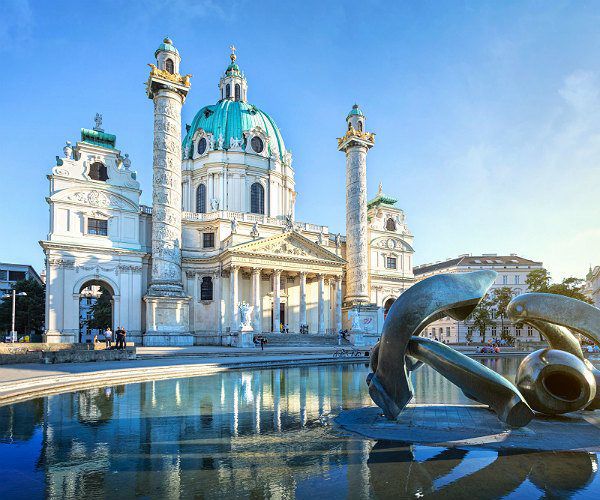
Travelling some 1,700 miles between Germany and Ukraine, Europe’s second-longest river links no fewer than ten countries, showcasing some of the Continent’s most impressive cities. But, alongside the great capitals of Austria, Hungary and Slovakia, there are plenty of lesser-visited gems on its storied banks. To help guide you, find my following selection of must sees.
Vienna
The delights of Vienna need little introduction, with the ‘City of Music’ having long tempted Europe’s elite with its storied operas and truly spectacular palaces. You can sip coffee in cafés where Trotsky played chess, take in works of the Old Masters collected by the city’s imperial monarchs and listen to world-class performances where Mozart’s lauded orchestrations were first rung out. Then, there are the quieter charms in between the attention-grabbing headlines. The city centre’s wide boulevards lead between welcoming parks, while wine-cellar tastings showcase the best of the vineyards that ring the city.
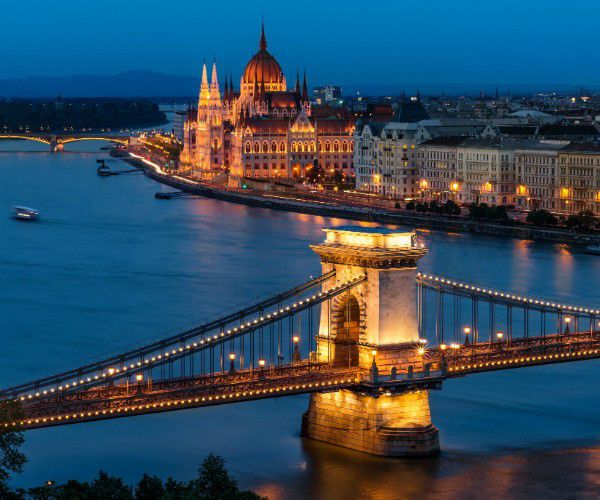
Budapest
There’s a reason most Danube cruises begin or end with the Hungarian capital. Really two cities in one – Pest on the eastern banks and Buda on the west – its charms are myriad, having only been unified in the 19th century. It’s all watched over by Buda’s magnificent Castle Hill where historic walls cloak the 13th-century Royal Palace and cobblestone streets lead between Baroque houses, Gothic arches and churches that date back to the 11th century. Then, returning over the magnificent Chain Bridge – the fi st structure to span the Danube – you’ll be treated to Pest’s cultural concentration. Its flatter topography hosts everything from the Gothic Revival Parliament to the 19th century Opera House and neoclassical St. Stephen’s Basilica. But, if there’s one aspect that the two districts do share, then it’s a love of hot-spring spas, each historic offering more extravagant than the last.
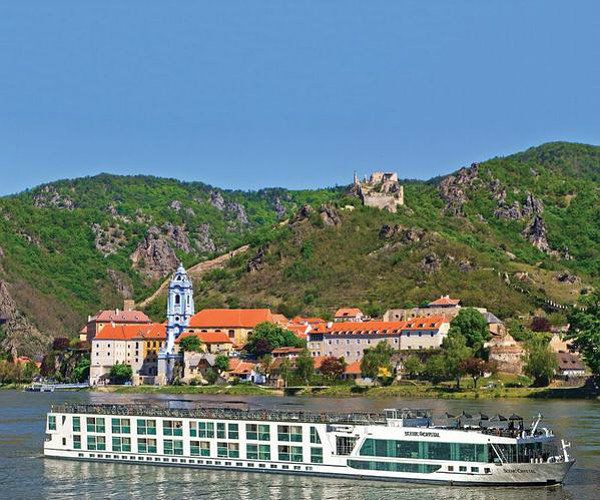
Dürnstein
From two of Europe’s city greats to something more off the beaten track, Dürnstein is a little picturesque town right on the banks of the Danube. It gets its name from its famous castle, which commands stunning river views from its hilltop position. A medieval treasure fallen into ruin, it’s still perfectly evocative, having been the site of Richard the Lionheart’s imprisonment in the 12th century. But, back in Dürnstein itself, this is Austria at its bucolic best. Narrow streets lead between photogenic, red-roofed buildings before opening out to the vineyards of the Wachau Valley – ideal for ranging hikes.
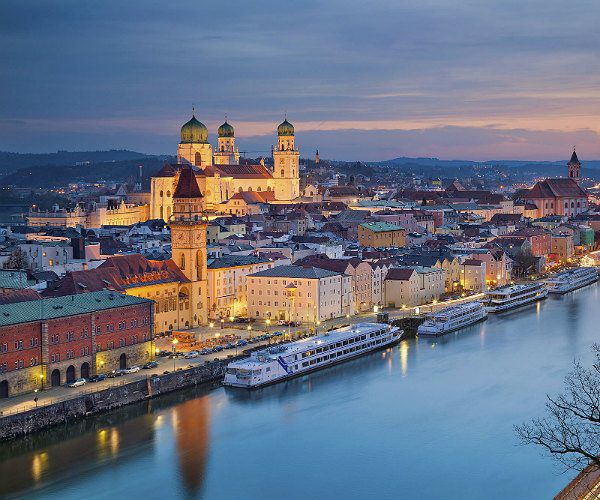
Passau
Found at the confluence of the Danube, Inn and the Ilz, Passau enjoys perhaps the most impressive setting on our list. This strategic position has informed a rich, mercantile history, today remembered in everything from Baroque churches and a beautifully frescoed town hall to St. Stephan’s Cathedral, host to the world’s second largest organ. There also seems to be a theme cropping up here; like Dürnstein and Budapest before it, Passau is overlooked by a hilltop fortress. And, its 13th century Veste Oberhaus offers views out into Dürnstein, Austria Bratislava, Slovakia next-door Austria, its bastion a treasure trove of medieval heritage.
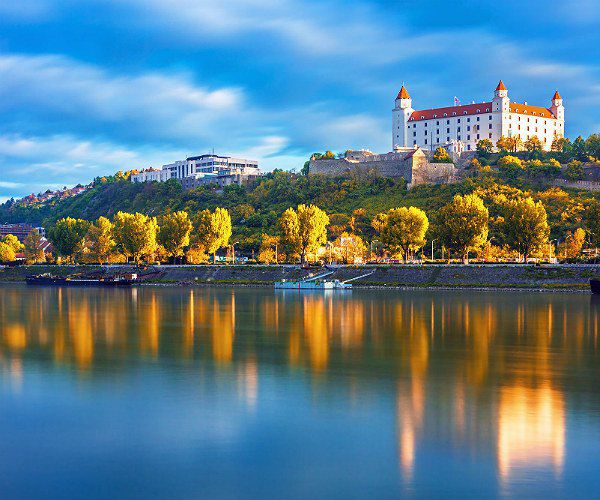
Bratislava
A city of competing influences, the Slovakian capital welcomes with both communist-era severity and the arresting vestiges of its 18th-century heyday. One moment you’ll be admiring cathedral spires and vaulted palaces full of period furniture, and the next taking in monuments to socialist icons. In among it all, Bratislava is delightfully green. Hilly parks are criss-crossed with hiking and biking trails that eventually give way to the vineyards of the lowlands. As is now de rigueur, it’s all backdropped by the city’s homonymous castle, its stern white walls capped with terracotta coloured turrets.
By Scott Anderson, General Manager at The Luxury Cruise Company
Best romantic Latin American beach retreats
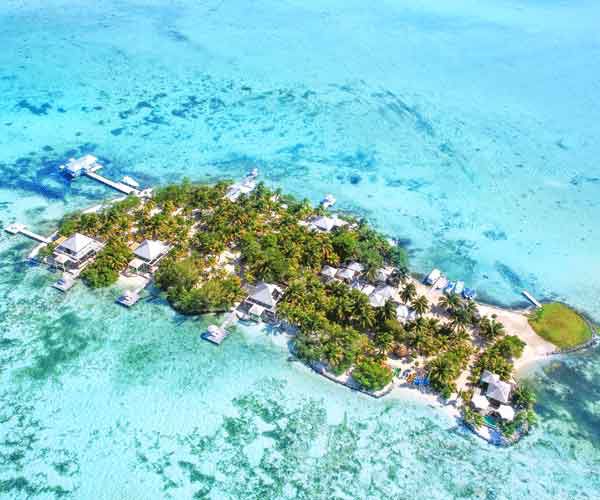
With some of the most picturesque and dramatic coastlines in the world, Latin America offers up a plethora of options for romantic coastal retreats. Luxurious resorts, exclusive seaside boutiques and rustic-chic tropical hideaways are all available, meaning there is a hotel to suit all tastes and requirements for your indulgent luxury trip.
Here are five of our favourite spots to enjoy a romantic getaway by the sea:
Ponta dos Ganchos, Celso Ramos, Brazil
Located on the stunning southern coastline of Brazil, Ponta dos Ganchos offers travellers seeking a luxury escape ultra-personalised service and attention to detail. Close to a traditional fishing village, the hotel is constructed on a private peninsula and boasts secluded beach access with stunning Atlantic views. One of the most exclusive resorts in Brazil, Ponta dos Ganchos is composed of 25 exquisitely appointed and spacious bungalows, some of which offer private plunge pools.

Ponta dos Ganchos boasts a heated swimming pool, massage gazebos, a huge Spa, a state-of-the-art fitness centre, an ocean front tennis court, cinema, restaurant, bar and nature walks through the surrounding forest. These exceptional facilities are what earned this incredible retreat the Leading Hotels of the World seal of approval. Perfect for honeymoons and indulgent trips to enjoy the sun, sea and sand; Ponta dos Ganchos is one of the most romantic hotels in Brazil for a bespoke luxury experience.
Cayo Espanto, a private island experience, Belize
For those seeking the ultimate luxury experience on their romantic getaway, Belize’s exquisite private islands are the most exclusive hideaways around. Boasting first-class service and a breath-takingly beautiful Caribbean backdrop, one of our favourite islands is the charming Cayo Espanto. Situated 3 miles from the mainland, this island paradise offers blissful isolation in a spectacular location.

Walk along the shore, swim in the crystalline sea and enjoy a cocktail watching the sunset over the sparkling ocean outside your luxury villa. The island offers up to seven individually designed private villas complete with a private dock, a seafront plunge pool, alfresco shower, private verandas and panoramic views. Your stay on the island includes a gourmet tailor-made menu prepared as and when you wish, alongside a full spa service and a menu of bespoke activities on the island, sea and mainland. For ultimate luxury and privacy in a romantic setting, Cayo Espanto is the perfect choice.
Kura Design Villas, Uvita, Costa Rica
Offering unquestionably one of the most stunning pool views in Latin America, Kura Design Villas, a member of the eco-friendly Cayuga Collection, is one of the standout coastal hideaways in all of Costa Rica. The stylish infinity pool overlooks verdant forest and offers guest sweeping views out to the ‘Whale Tail’ of the Marino Ballena National Park and the Pacific Ocean. Each seductive villa offers a contemporary luxury experience with private plunge pools, double rain-showers and private terraces.

The ocean-facing stand-alone villas mean guests can enjoy the utmost privacy alongside a gentle Pacific breeze. This ultra-modern boutique effortlessly blends the best of modern luxury with a deep respect and appreciation for the lush flora and diverse fauna of its exquisite natural environment. For those wishing to enjoy a romantic trip that blends the beauty of the rainforest with the tranquillity of the ocean – look no further than Kura.
Pousada Maravilha, Fernando de Noronha, Brazil
Consistently voted as having some of the best beaches in the world, Fernando de Noronha is one of Brazil’s most romantic destinations. The incomparable Pousada Maravilha is our favourite hotel for experiencing this charming and remote archipelago. With only 8 bungalows and apartments nestled into the forested hillsides, this exclusive boutique overs exclusive accommodation with dramatic vistas of the turquoise bays, sea cliffs and volcanic rock formations.

From the comfort of your private terrace, you can observe dolphins in the bay and enjoy the gentle sea breezes of the Atlantic Ocean. Pousada Maravilha also offers an infinity pool, sauna, and massage parlour where couples can spend time alone in total tranquillity. The guest house provides a comprehensive beach service to ensure you are well looked after when relaxing on the beach and for those who want to explore the area there is a boat ride around the island available to book from the hotel.
Casa Chameleon, Santa Teresa, Costa Rica
This adults-only honeymoon hotel is the perfect destination for those couples wishing to enjoy time alone to celebrate their love. Surrounded by the exuberant tropical beauty of the Costa Rican rainforests, Casa Chameleon enjoys sweeping views of the ocean and the beaches of Mal Pais and Santa Teresa.

This hotel is an intimate retreat where you can disconnect from the world and enjoy a one-of-a-kind personalised stay during your romantic trip. Each villa boasts a private plunge pool, private covered porches and floor-to-ceiling glass doors that allow the natural beauty of this splendid destination to flood the rooms with the soft sunlight. Honeymooners or those wishing to reconnect with each other away from the stresses of everyday life will adore this unique hotel.
By Simon Williams from humboldttravel.co.uk
The best 10 things to do in Singapore

The Garden City. The food capital of Asia. The New York of the East. With names like these it’s no surprise that Singapore is one of the Far East’s most popular cruise destinations. Here are our top ten things to see and do in Asia’s Lion City.
The Merlion
The mythical symbol of Singapore, the 70 tonne waterspouting Merlion is the city’s most recognisable statue. It provides the quintessential Singapore photo opportunity, attracting millions of self-snapping visitors a year. Once you’ve taken that all-important shot, spend some time relaxing on the terraced seating area, which provides some great views across the water to Marina Sands Bay.

Singapore Flyer & Marina Bay
Views across the skyline of Singapore to the distant islands of Malaysia and Indonesia can be enjoyed from the Singapore Flyer, which, at 165 metres, is the world’s second largest Ferris wheel. It’s just one of the many attractions of Marina Bay, a waterfront district packed full of fashionable restaurants, luxury hotels, trendy shops and galleries.

Sentosa Island
A mix of theme parks, golf courses, beaches and hotels, this small island is where Singaporeans come to enjoy themselves. Once a fishing villages, Sentosa means ‘peace and tranquillity’ in Malay, although finding that during weekends and holidays can be difficult due its popularity. It’s packaged and processed fun, as is the Singaporean way, but there’s something for everyone, including a vast oceanarium, a waterpark and Universal Studios.
Singapore Zoo
Moats and streams replace barren cages at one of the world’s few open zoos, which houses more than 300 species, including rare Asian animals such as the Komodo dragon, Sumatran tiger, clouded leopard and a large colony of orangutan. Explore by foot or hop on board a guided tram to explore the award-winning zoo’s 11 zones, which include a giant biodome, a stunning recreation of an Asian rainforest.
Night Safari
A visit to Singapore’s famous Night Safari, located next door to Singapore Zoo, is a highlight of any stay in the city. This unique attraction invites visitors to take a safari through the jungle, by tram or on foot, to observe the night time habits of animals including Himalayan griffon vultures, one-horned rhinos, wildebeest and gazelles. The Night Safari is also one of Asia’s leading conservation and research centres.

Raffles Hotel
Even if you’re not staying there, a trip to Singapore wouldn’t be complete without a visit to this timeless, colonial-style landmark. Named after Sir Stamford Raffles, it’s evolved into an elegant haunt for celebrities, writers and royalty. Stop by for a Singapore Sling at the famous Long Bar. This cocktail of gin, cherry liqueur, sugar, pineapple or lemon juice and angostura bitters was invented by Ngiam Tong Boon in 1915.

Orchard Road
Shopping is something of a national obsession in Singapore and Orchard Road is its most famous shopping district. This long expanse of gleaming shopping centres and air-conditioned, tax-free boutiques buzzes with activity day and night, not least during Chinese New Year when colourful street parades take place along it, and at Christmas, when the main street is festooned in festive lights.

Chinatown
Thriving Chinatown is something of a Singapore icon. Great for shopping, it has some of the best-priced souvenirs in the city. It’s also the place to go to try authentic Chinese food, served fresh from the stalls of street vendors or any number of excellent local restaurants. Learn more about the history of Chinatown at the Chinatown Heritage Centre on Pagoda Street and pay a visit to Thian Hock Keng, the oldest temple in Singapore.

Little India
Located to the east of Singapore River, Little India is one of Singapore’s most vibrant neighbourhoods. Its colourful, noisy streets are packed full of Hindu temples, mosques, churches and market stalls selling all types of souvenirs and tasty Indian and Malaysian treats, from Keralan curries and North Indian thalis to roti prata (pancakes) and steaming cups of teh tarik – a ‘pulled’ hot milk tea.

Clarke Quay
Packed full of buzzing bars, restaurants and nightclubs, Clarke Quay is the place to go for a good night out in Singapore. Its location, just off the city’s main river, lends itself to al fresco dining, while for daytime visitors, several good shopping centres along with galleries, museums and historic attractions, including the city’s old colonial fire station, are all close by.
Cruising
There’s an excellent range of leading luxury cruise lines that sail either from or to Singapore, with our specialist-recommended picks including Silversea, Regent Seven Seas Cruises, Crystal Cruises, Seabourn, Celebrity Cruises, Holland America Lines, and Oceania Cruises.
By Scott Anderson, General Manager at The Luxury Cruise Company
The most beautiful market in the south of France

If you’ve ever explored France, chances are that you’ve stumbled upon one of the country’s many markets. These have long been a thriving tradition in France with regular markets displaying produce ranging from fruit and vegetables, to fish, meat and other delicacies, as well as many non-food stalls. The market at Sanary-sur-Mer is no exception. There’s a market in the seaside town every day of the year except for Christmas Day, but visit on a Wednesday for the main event, from around 8am to 1pm. Last year French TV channel TF1, the most viewed television channel in Europe, pronounced it the most beautiful market in France, beating tough competition from all over the country after four months of voting.
Situated in the department of Var, between Marseille and Toulon, Sanary-sur-Mer has a picturesque harbourside setting, and fought off tough competition from Royan (2nd), St. Pierre of Reunion (3rd), Uzès (4th), Arras (5th), Châtillon-sur-Chalaronne (6th), Issigeac (7th), Dieppe (8th), Puy-en-Velay (9th) and Valves (10th) to be crowned the most beautiful market in France.

Wednesdays are a great day for fish at the market with many stalls lining the harbour, displaying recent catches – some quite large – right by the water’s edge. Even if you have no intention of buying, it’s fun just to watch the hive of activity as fishermen cut a whole tuna into steaks ready for sale or chat to passing customers.


Just a stone’s throw from here, a specialist horse meat van sold a variety of different cuts. Given the anatomical similarities to a cow, these cuts are much the same as you would find in beef, but typically with less fat. Finer cuts such as tenderloin, sirloin and entrecote were all displayed, along with a number of cheaper cuts more suited to slower cooking and for use in casseroles, for example.

There are also stalls cooking dishes in what I would call large paella pans but no doubt they have a different name in France!



I visited with the owner of the new small luxury hotel Mas du Brulat, Su Stephens, and consultant chef for the hotel’s L’Olivier restaurant, Clive Dixon, who himself has worked alongside the likes of Heston Blumenthal and Pierre Koffmann, on a quest to find some of the region’s best local produce for the restaurant and some ingredients that Clive would use to prepare a meal for us later that evening.
The emphasis was on finding quality produce and creating a meal from that, rather than coming up with a dish first and then trying to source the required ingredients – a subtle but important difference that prioritises quality produce ahead of a pre-determined menu. And finding great produce at a French market is made easier because many of the stalls allow you to sample and taste their offerings, and you can also talk directly to the producers.
One of our first stops was at the cheese stall run by Nos Fromages de France.

There Clive was drawn to a mature goat’s cheese from the Savoie region of France that had the crumbly consistency of a Parmesan but with a delicious, nutty flavour.

Next up the grocery stall run by Fred et Karin, a family business from Ollioules.

There they had some particularly good tomatoes that you could taste and we ended up coming away with two different varieties that would go nicely with the goat’s cheese for a simple starter.

We had seen both white and green varieties of asparagus in abundance at a number of stalls so it was clearly something that was in season. We opted for the slightly more delicately-flavoured white asparagus to go with some fish that we’d be having for our main course.

Clive had had his eye on some Gariguette strawberries but, after we tasted the Carpentras variety which is famed for its early crop in Provence, it really was no contest. Displayed with them was a Qualisud certificate for their exceptional quality. And they really did taste amazing!

Next it was on to the fish stand belonging to Poissonnerie Pilato, the commerical division of which also already supplies the hotel’s L’Olivier restaurant.

Here we bought some monk fish…

…and some red mullet.

Even if you have no interest in purchasing, it’s worth watching what goes on at the stall – the staff are quite entertaining and jovial, doing silly things like kissing the fish and pretending they are flying, as well as getting on with the more serious business of de-scaling and gutting anything you buy, should you wish.

Whilst doing the rounds at the market, we also sampled some meats at Le Roi de la Bistouquette’s stall, where they had a particularly tasty Figatelli – a Corsican specialty – amongst other meats.

There are plans back at the hotel to develop the cellars with an exciting and lively wine bar and many of these meats would be ideal for some lovely charcuterie plates, so this was a useful find for the future.

Of course, there are many other stalls at the market – not just more food stalls with things like bread, olives and much more, but also stalls with items such as clothes, kids’ toys and so on, but to my mind it’s the food at the market that’s by far the most interesting. Once we had our fill of the market (quite literally in some ways!), we headed for a patisserie to purchase a tarte tropézienne.

As its name suggests, tarte tropézienne has its origins in St. Tropez but was in fact given its name by none other than the then relatively unknown Brigitte Bardot when she was in the city for the film ‘And God Created Woman’ which was largely responsible for bringing her into the public spotlight. As it’s name doesn’t suggest, it is more of a cake than a tart; it was invented by Alexandre Micka, a Polish pastry chef in St Tropez, and consists of a round brioche with pearl sugar and a sort of pastry cream and buttercream filling, with a delicate flavour of orange blossom water.

Finally, a wander around Sanary-sur-Mer’s streets, away from the hustle and bustle of the market, was a good way to get more of a feel for this pretty town. Explorer Jacques Cousteau had a home here and it was in the waters off Sanary that he developed diving equipment that is still crucial to deep-sea diving today. There’s even a museum – the Frédéric Dumas International Diving Museum – in the town, dedicated to the man who achieved a world-record deep-sea dive in 1943.

Back at L’Olivier, Clive worked his magic in the kitchen. The starter was relatively simple (so often the simplest dishes are the best, though!) and involved combining the tomatoes with the cheese, some basil, olive oil, seasoning (both smoked Maldon sea salt and Camargue salt), and a dash of sherry vinegar, so the focus of his attention soon turned to our main course.
Having peeled the bottom two thirds of the asparagus (white asparagus spears tend to be thicker and more fibrous than their green counterparts), they were put in a pan with some butter, olive oil and a little water, and some roasted garlic later, and then set aside whilst the fish was cooked.

The red mullet had the heads and tails removed and was de-boned…

…before being cooked on a low heat with some white wine, olive oil and a little rosemary, with the pan covered with some clingfilm to help keep the moisture in. (Yes, you can do this if the heat is low enough!)

The monk fish was seasoned and cooked sous vide (vacuum packed and cooked at a low temperature in water) before being finished in the same pan that had been used for the asparagus and basted regularly with the juices.


Dessert consisted of the tarte tropézienne which was served with the strawberries that were washed and hulled, as well as a basil ice cream which Clive had prepared earlier but that was freshly churned using a Pacojet.

As for the finished product? Here are the three dishes that we had… and rest assured, they tasted every bit as good as they look!



By Paul Johnson of olivesandvines.eu
We’ve been warned about drones but can we prevent another Gatwick?

“My heart was in my hand when I saw the drone – I thought our flight would be cancelled,” said Simon. But, by midday yesterday, she had arrived at Gatwick. The experience, though, had left her bewildered. “It’s crazy that a drone could cause so much disruption and actually take flights off course.”
Crazy but predictable. For years, aviation experts, pilot groups, MPs and peers have been warning that a drone could unleash mayhem at a busy British airport. It was a question of when, not if, they said.
Billionaire superyacht showdown: who’s who at the 2019 Cannes Film Festival
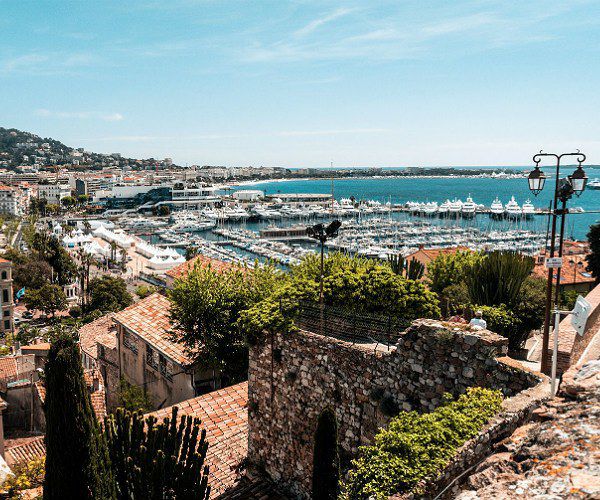
There was some concern last month that this would be the sleepiest Cannes Film Festival in years, but in true dramatic fashion the festival added not only Elton John with his premiere of “Rocketman” but also Quentin Tarantino with the premiere of “Once Upon a Time in Hollywood” which all but guarantees a star-studded Cote d’Azur and a hopping superyacht party schedule.
Terror in Gwadar as gunmen storm luxury hotel

Three security guards were killed and four people were injured when gunmen stormed the Pearl Continental Hotel here on Saturday. Official sources said that the attackers wearing uniform of security forces and armed with modern weapons barged into the hotel and opened fire after taking the hotel staff hostage. Security guards deployed at the hotel offered resistance but three of them were shot dead by the attackers. Two of the deceased were identified as Rasheed and Zahoor. Gunshots fired by the assailants also left Anwar, Ali Raza, Jawed and an unidentified man injured who were taken to hospital.
Tropical bay from ‘The Beach’ in Thailand to close until 2021

A Thai bay that was made famous by its appearance in the film The Beach is to remain closed until 2021. Maya Bay, on the island of Phi Phi Leh, was temporarily closed last year after officials said a sharp rise in visitors had severely damaged the environment. Before it closed, up to 5,000 people were visiting the bay every day and most of its coral died as a result. Authorities have now extended the ban on visitors by two years to give more time for Maya Bay’s ecology to recover.
The best gourmet destinations in the Alps

One thing that draws us to the mountains as much as great ski areas and luxury hotels are the gourmet restaurants serving culinary delights. Restaurants in the mountains continue to get better and better and many of them are collecting Michelin stars at an exceptional rate. Here are five glorious gourmet destinations in the Alps.
Courchevel, France
Courchevel is the sparkling jewel of Les Trois Vallées. This brilliant resort has been attracting skiers from all over the world because of its wonderful luxury hotels, expansive ski area and its unbelievable restaurants. Currently, Courchevel holds 14 Michelin stars; more than any other resort in the Alps. One of the most prestigious restaurants in Courchevel, boasting three Michelin stars, is the famous ‘Le 1947’. This magnificent restaurant can be found at the Cheval Blanc Hotel and only serves 25 people per evening; it is run by expert chef Yannick Alléno. Other fantastic starred restaurants include ‘Azimut’, ‘Le Farçon’ and the gastronomic ‘Le Chabichou’.
Megève, France
Only an hour from Geneva, the food Mecca of Megève can be found amongst the snowy peaks of the Alps and in clear view of the mighty Mont-Blanc. The town was built upon a 13th-century village and has everything you’d expect from a chocolate-box resort; from ancient cobbled streets, and old baroque clock towers to rustic wooden chalets. Megève is well known as one of the gourmet capitals of the Alps and the resort currently holds an impressive 10 Michelin stars. For those looking for the very best fine dining, try the ‘Flocons de Sel’ for a once-in-a-lifetime experience. The magnificent three-starred restaurant is known for its compelling French gourmet cuisine and brilliant service that will leave you booking your next reservation as soon as you can.

Zermatt, Switzerland
Zermatt is one of the many star-studded Swiss resorts in the Alps. The town is well known for its luxury hotels, magnificent views of the iconic Matterhorn and its vast array of delectable restaurants. The resort has over 20 amazing restaurants serving all kinds of brilliant culinary treats; from fresh Japanese sashimi in ‘Myoko’ to artistic adaptations of traditional European food in ‘Omnia’. Zermatt also holds five well-deserved Michelin stars. For a fantastic dining experience, and well worth the trip, try ‘After Seven’. The restaurant is extremely stylish, contemporary and beautifully furnished; the sleek look of the restaurant is mirrored in the lovely gourmet food.

Courmayeur, Italy
Courmayeur is a charming little medieval town located at the top of the Aosta Valley at the foot of Mont-Blanc; right on the French-Italian border. Courmayeur has an unbelievable selection of restaurants on-and-off the mountain and is a popular spot for skiing food lovers. The resort doesn’t have any Michelin stars, yet, but almost all of its restaurants have made it onto the Michelin guide with many of them being awarded the Michelin Plate and Bib Gourmand. One of the best dining spots for those looking for a fine dining experience is ‘Auberge De La Maison Restaurant’. They serve traditional Italian cuisine with a modern twist either in their rustic restaurant or on their sunny terrace; which offers stunning views of Mont Blanc.

St. Moritz, Switzerland
Nestled in the Engadin Valley, by a beautiful lake, is St. Moritz; another sparkling resort on Switzerland’s long list of luxury destinations. The town of St. Moritz is extremely scenic, home to a long and fascinating history and a perfect luxury destination for skiers looking for glitz and glamour. St. Moritz also boasts a plethora of incredible restaurants and an amazing seven Michelin stars. The resorts most prestigious restaurant, with two Michelin stars, is the ‘Ecco St. Moritz’. The restaurant is superb in every aspect; from the beautifully decorated setting to the creative and delicious nouvelle cuisine. St. Moritz’ other fantastic restaurants that should be tried are ‘IGNIV’, ‘The K’ and ‘Da Vittorio’; all of which offer unforgettable gastronomic experiences that will leave you with pleasant memories of your time here.

By Craig Burton, Managing Director of www.skisolutions.com
A new cruise with $175,000 ocean-view suites will begin voyages to all seven continents in 2021 — here’s an inside look at the luxury ship
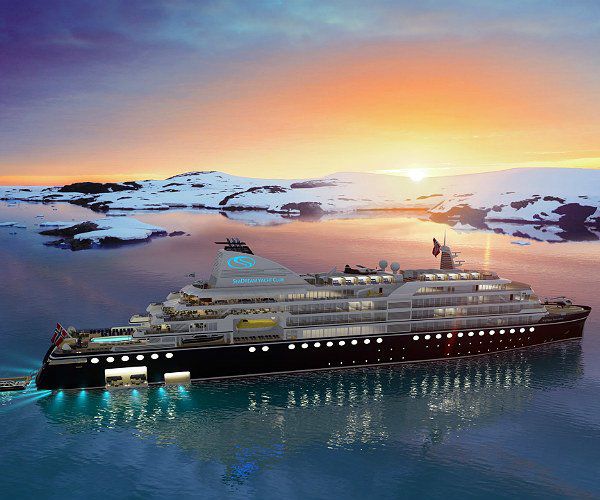
One of the world’s newest cruise ships will stop at all seven continents. According to Robb Report and Travel + Leisure, SeaDream Yacht Club has announced its newest luxury cruise ship: the Innovation. The ship is the first new vessel the yacht club has unveiled since its origins in 2001 — and it’s equipped for both tropical and polar expeditions. The cruise ship joins the ranks of other luxury cruise ships such a Seaborn cruise that visits 62 ports, the Regents Seven Seas’ World Cruise which docks at five continents, and Silversea’s 140-day cruise aboard its luxury Silver Whisper vessel.
Things you never do in Switzerland

Every country has its cultural quirks and legal oddities, and Switzerland is no different. The Swiss have far more than delicious chocolate up their sleeves. Some of these rules are as cuckoo as a Swiss clock. So what could possibly be peculiar about this affluent nation known for nature, neutrality, and luxury? Let’s find out!
Be Quiet!
Do you know those neighbors whose lawnmowers are in full gear early in the morning on a Sunday? Not in Switzerland! Due to the loud noise, it’s considered an offense to mow lawns on Sunday. In keeping with the noise complaints, slamming a car door after 10 pm or you might just end up with more than scathing looks. Sundays are not the right day to wash your car or hang clothes out to dry, both practices are considered highly offensive and inconsiderate by Swiss standards.
Legally Speaking…
On greener side of things—grow as much as you want, gift as much as you want, smell, smoke, eat, and whatever else you want to do with marijuana as often as you want, but don’t ever sell it. It’s illegal to sell hash and marijuana in Switzerland, but legal to use and grow it which has resulted in approximately 100 tons of hash and marijuana used each year by around 600, 000 citizens—one of the highest rates of cannabis use in the world.
Table for Two?
The Swiss animal rights code is pretty strict, specifically regarding socializing between animal species. Forget about keeping just one guinea pig as a pet, if you’re going to have one, you must have two. Swiss law doesn’t allow owners to keep just one and, if you’re not sure where to find a partner for your furry friend, that’s made easy too. Say your guinea pig’s companion has died and you can’t bring yourself to get a new one, just call up Priska Küng, whose “rent-a-guinea pig” service pairs up grieving and lonely guinea pigs with ideal matches. You can find this animal lover and her multitude of pets in Hadlikon, a village not far from Zürich. By the way, it’s also illegal to flush a goldfish down the toilet in Switzerland, so if you need to dispose of your scaly friend, be discreet.
Break Glass…
Switzerland’s population is just over 8 million, but this number is nothing in the face of their military’s preparedness systems. Not only are there fully-stocked bunkers that can house the entire population, but these bunkers are hidden in plain sight in populated villages posing as regular country homes. The bunkers are just the beginning though, as at least 3, 000 locations are ready to blow at the drop of a hat in case of an attack. Yup, the Swiss aren’t messing around when it comes to their nation’s protection, and the destruction of every major access point into the country is high on the cards as one of their defense mechanisms. As for needing landing strips if things go south? All the military has to do is remove the highways’ grade separations and they’re all set. Talk about being prepared.
A Cow For Some Magic Cheese
The Swiss take their cheese very seriously. Leasing a cow to restaurants is customary for Swiss farmers, as it’s not only legal to do so, but all the cheese that is procured from the cow’s milk can be kept by the leaser. Though private leasing arrangements are rare, some still choose to do so, preferring to create cheeses more suited to their palates than those found in stores.
So What’s Oddly Legal There?
Here are some things that are oddly legal in Switzerland. You can legally download music and movies, no problem, just not share them. Prostitution is legal and so is assisted suicide. The Swiss are okay with public nudity, but draw the line at nude hiking. The Appenzell region in the northeast banned this activity in 2009 and actually fined a violator 100 Swiss Francs in 2011.
The best reasons to do a horseback safari in Africa
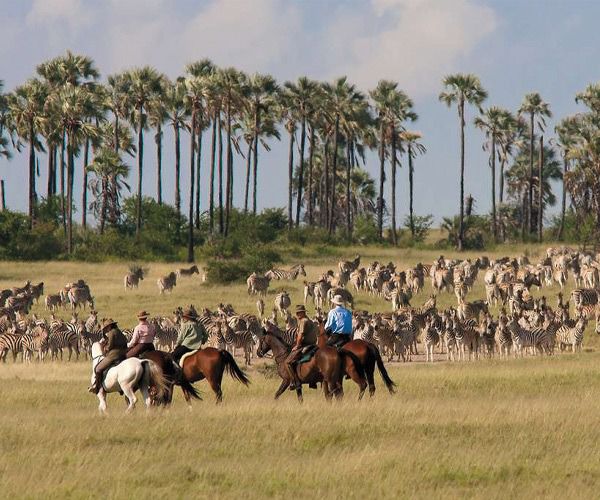
Imagine galloping alongside the Great Wildebeest Migration in the Maasai Mara, Kenya. Picture yourself trotting through the African bush, tracking a herd of elephants in Botswana. Conjure up visions of yourself riding with a wild herd of zebra… No longer does this need to be the stuff of your wildest dreams. A horseback safari in Southern Africa, guided by the best in the business David and Robyn Foot, will throw you into the wild at top speed, leaving you breathless, windblown, and in a state of complete euphoria. Add in a spot of luxury – tented camps outfitted in four-poster beds, rich textiles, long, cool drinks served to you under the magnificent Kalahari sunset, and glorious food cooked under the stars – and you can see why an African horseback safari has become something of a legend amongst luxury travelers. You just have to experience it to believe it.
Whether you’re an experienced equestrian or a novice rider, take the ride of a lifetime and see southern Africa from a new and unique viewpoint. Here are 5 reasons to plan your African horseback riding adventure.
1. You will get up close and personal
When it comes to breathtaking wildlife, Africa is second-to-none. Everybody knows this. But if you want to truly experience it – if you want to breathe in the same air as an elephant, smell the sweat of a herd of migrating zebra, feel the roar of a big cat in your bones – nothing compares to a horseback safari. A horseback adventure will see you tracking elephants or buffalo through pristine wilderness, or perhaps riding with a wild herd of giraffe or zebra, and because you can move along game trails with the animals, you can get much closer than you would by vehicle. To them, you’re simply a fellow grazer, doing your wild thing in the bush.

2. You will take the road less traveled by
One of the best things about a horseback safari is that you can access areas vehicles can’t reach. Discover Africa the way it was meant to be: galloping along African savannas, cantering over the rugged coastline, and wading through peaceful rivers– all atop a glorious silken beast, mane flying free… On horseback, you will get a real sense of the space and breathtaking beauty of the land where it all began. You are no longer a mere observer of wildlife, but a part of the landscape. It is the truest way to immerse yourself in the present moment and leave the “real” world behind.

3. You will experience wild luxury
Just because you’re out there running with the wildebeest, doesn’t mean you need to turn completely untamed and forego luxury! At the end of every day riding wild, return to camp for pampering and rejuvenation. Camp Kalahari by Natural Selection, for example, offers horseback safari-goers a return to the traditional safari style of the old explorers, and the best way to experience the Makgadikgadi in Botswana. Decorated with colonial antiques, rich textiles, Moroccan kilims, and four-poster beds, your safari tent would compete with any luxury resort for comfort and style, but with the added bonus of being far from the madding crowd. It’s just you, the stars, horses neighing and lions roaring… You will enjoy 5-star service with sundowners in the desert under miraculous sunsets, and dinner out under the magnificent Kalahari sky.

4. You will take unbelievable photos
What better way to take stunning photos of your African adventure than from horseback? Spending time in the saddle on safari offers up some of the most stunning picture opportunities: for one thing, you’ll be much closer to your wild thing subjects than if you were on four wheels, and for another, you’ll be on the same eye level. Trust us when we tell you that coming lens to eye with an elephant makes for quite spectacular photographs! Bonus points for those fun “in between the ears” shots.

5. You will have a one-of-a-kind adventure
The wind in your hair, the sun on your face, the sound of horse hooves as you stride out alongside wild animals across the savanna… going on a horseback safari is the ultimate adrenaline rush. And because no two safaris are alike, you’ll never know what adventure awaits you on each incredible journey.

By Daniella Ponter from sikelelisafaris.com
The most unusual places to stay around the world
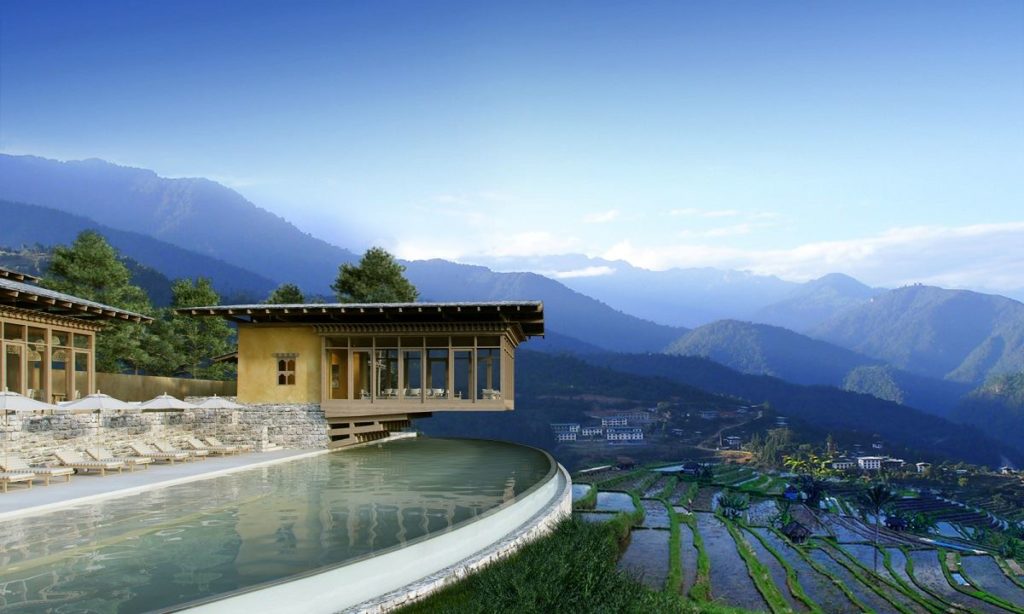
As the world becomes smaller, travelers are getting ever more adventurous and are not content with merely treading the well-worn holiday paths. They are seeking out unique hotels, in exceptional destinations, which also offer memorable experiences while they are there. Here are some of our favorite places to stay, from a pod on the side of a mountain in Peru’s Sacred Valley to a bed perched on a treehouse platform in one of South Africa’s national parks, where you can watch the wildlife below and the stars in the vast skies above.
Go glamping on the side of a mountain at Skylodge Adventure Suites, Peru
Here’s an opportunity to hike up to your room for the night: a pod on a mountainside in the Sacred Valley. These transparent pods at Skylodge Adventure Suites offer panoramic bird’s eye views over the Peruvian countryside from above the valley floor, as condors swoop by and the skies are covered in a blanket of stars in the evening. After a scenic night’s sleep, enjoy a delicious breakfast before ziplining down in the morning.

Spend the night in an underwater room at Manta Resort, Tanzania
At the Manta Resort on the idyllic island of Pemba, just off the coast of Zanzibar, you can sleep in an underwater room in your own private stretch of sea. The glass-cased chamber is plunged four meters beneath the surface, where you can spend the night with the fishes – a truly unique experience! Above you, the landing deck has a lounge and bathroom, with another deck above that for sunbathing, in between refreshing dips in the water. Meals of fresh fish will be brought to you, so you can dine in the middle of the sea.

Be a part of history in a candlelit cave at Sextantio Le Grotte della Civita, Italy
The UNESCO World Heritage-listed city of Matera is one of 2019’s European Capitals of Culture (the other is Plovdiv in Bulgaria). This enchanting city is dotted with centuries-old caves, and you can stay in one of them – bed down for the night in an atmospheric and romantic cave lit by candlelight at the gorgeous Sextantio Le Grotte della Civita, with bathtubs nestled in the nooks and crannies. Before bed, have a gourmet dinner in a restaurant housed in a historic church carved from the stone.

Sleep under the stars on safari at Lion Sands Game Reserve, South Africa
Africa has no shortage of unique places to stay, many of which are in prime wildlife-spotting areas. Go on a safari with a difference at Lion Sands Game Reserve in South Africa’s Kruger National Park – as well as seeing the Big Five, you can spend the night in a four-poster bed set high on a platform in your very own luxury treehouse, watching animals amble up to the waterhole, taking in the views over the endless savannah and falling asleep under a sky of stars.

Venture into the heart of the desert at Amangiri, USA
2019 marks the 50th anniversary of man landing on the moon: celebrate this momentous occasion by staying at Amangiri, a blissfully secluded retreat nestled in the vast, moon-like desert landscapes of Utah. Take in these spectacular surroundings from above on a hot air balloon ride, soaring over acres of mountains, lakes, and cliffs, and do some night-time stargazing. The suites are spacious and minimalist, with cool stone interiors and large windows to make the most of the setting, while there’s also a pool hewn from desert rock that’s perfect for cooling off in.

By Thomas Ryves www.exsus.com
Reasons why New Zealand will be triumphant after Christchurch

New Zealand is a country of untold beauty; from the North to the South Island there is an abundance of natural sights that will take your breath away. There are mountain climbs that will elevate your view to more than 12,000 feet and scuba dives that will take you through an underwater paradise. New Zealand is a country of great adventures and bucket-list activities.
You can ascend the world’s highest waterfall Via Ferrata for the best view of Lake Wanaka or wobble across beams high up in the treetops. You can sip wine at an exclusive wine estate and dine out at fabulous restaurants. This is a country of multiple cultures, languages, religions, and personalities. With a reputation as an exquisite destination for a holiday or a secure place to carve out a new life, New Zealand does not disappoint.
Defining moments
But to ignore the recent Christchurch mosque shootings would be to pretend that a massive, trumpeting white elephant had not just walked into the room. It was an event that left us all so shocked, reeling from grief and unsure as to how we would continue.
Our reaction to the event was a defining moment in our lives and for our gorgeous nation as a whole; a badly thought out emotional response could have set us on a very clear path of negativity. If we chose to retaliate, to stand up and announce our determination to fight against “the enemy” we would set out on a trajectory that would insidiously creep into our very core. If we chose to embrace, nurture and stand together we would keep our soul intact as a nation. A nation that is open and welcoming to all.
That moment came when Jacinda Ardern held a woman, a wife, a mother and a victim in her arms and soothed her with kind words and heartfelt empathy.
That was our turning point; that was when our very hearts rose up and as one, we surrounded those people with the love that were left reeling from the heinous acts of one man. We stood together and unanimously held hands, surrounding our brothers and sisters that were injured, their families that were shocked and left bereft with grief and of course we reached out to each other because we were all struggling to come to terms with what had happened.

More than a bucket list destination
And that, in a nut-shell is New Zealand and her people, a country where almost everyone’s favorite expression is “It’ll be alright.” Where differences are not only tolerated but truly honored and appreciated and shared.
This beautiful country of endless vistas, long beaches, snowy mountain ranges, crystal clear rivers, and lakes will always be beautiful. Every single New Zealander will see to that, whether that New Zealander is a migrant worker, a foreign student or an international visitor. When you arrive here as a stranger, we welcome you, you are us and we trust that you will hold our values as your own.
This country represents more than a bucket list of activities and adventures, it represents the young couple who marry straight out of school and start their own weaving business or the family who run their own fruit orchard. It sits in the heart of a young German woman who came here 25 years ago to start a new life. It rests on the minds of the family who moved here to find peace from their own violent country. This country represents life and vibrancy, fresh air and clean water, hope and tradition, culture and food, innovations into ground-breaking technologies; this country represents growth along multiple dimensions.

Tourism at our hearts
We welcome visitors of all descriptions, ages, and creeds because we grow from our interactions with the world at large. Each visitor brings a flavor of something that is new and each personality that we engage with leaves us enriched and better for the interaction.
Tourism is such a huge industry and every business that is involved in this industry is dedicated to providing the best experience for our visitors. And this mind-set flows down from the governing bodies to the tour operators to the bed & breakfasts, hotels and motels, from the adventure operators to the family resorts, we are each committed to providing a safe and happy experience for our guests.

Maori culture
So despite the events in Christchurch we still laugh at ourselves when we do silly things, we are quick to share a joke because we love funny stories and anecdotes. We hold our heroes high up on our shoulders, and we sing the praises of someone we admire. We are a nation that lives and breathes the values of personal well-being and guardianship of our natural resources. The Maori term Tiaki applies beautifully in our everyday lives, it means to care for people and place. New Zealand’s Maori culture is an integral part of Kiwi life, it adds such a unique experience for visitors to our country.
The lessons we learn from the custodians of our Maori culture teach us to lead by example, to aspire to integrity and to practice what we learn from both acquired and inherited knowledge. These values are at the core of our society, one that is unique to our country and one that we love to share. Te Reo Maori, the Maori language is only spoken in Aotearoa New Zealand; it is in use in everyday life by locals and visitors are encouraged to test out a few words! Kia Ora is always a good place to start, it’s just a simple hello.

A place with heart
And as our nation regains its composure in the aftermath of Christchurch and we move forward with a new determination, we smile at each other and we remember the values we hold dear. We are not a society who places much value on wealth and social status, we do not hold grudges, we say hello to strangers and freely offer assistance without being asked. And we love sharing our treasures with like-minded folks. See you soon!
By Veronika Vermeulen www.arohatours.co.nz

